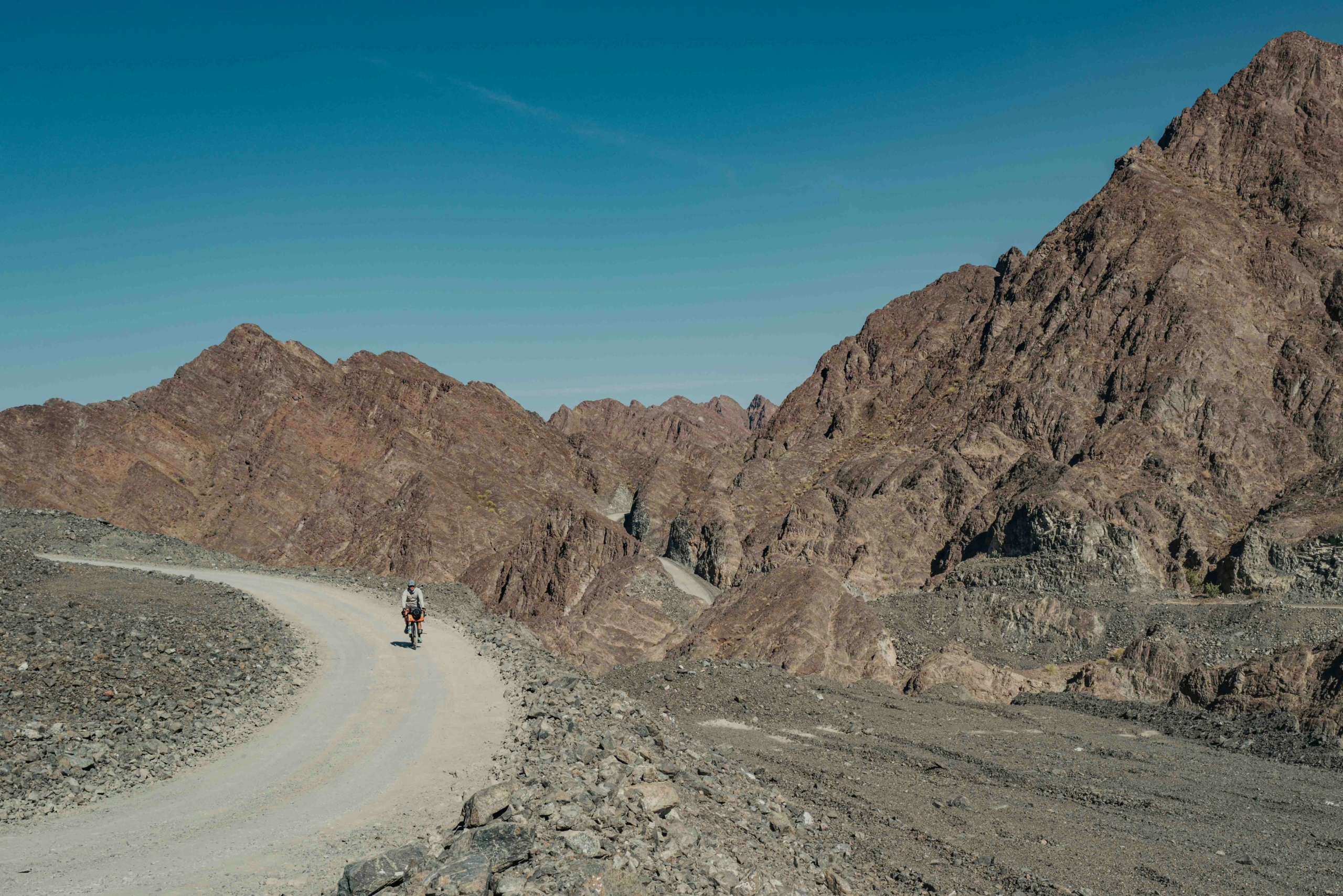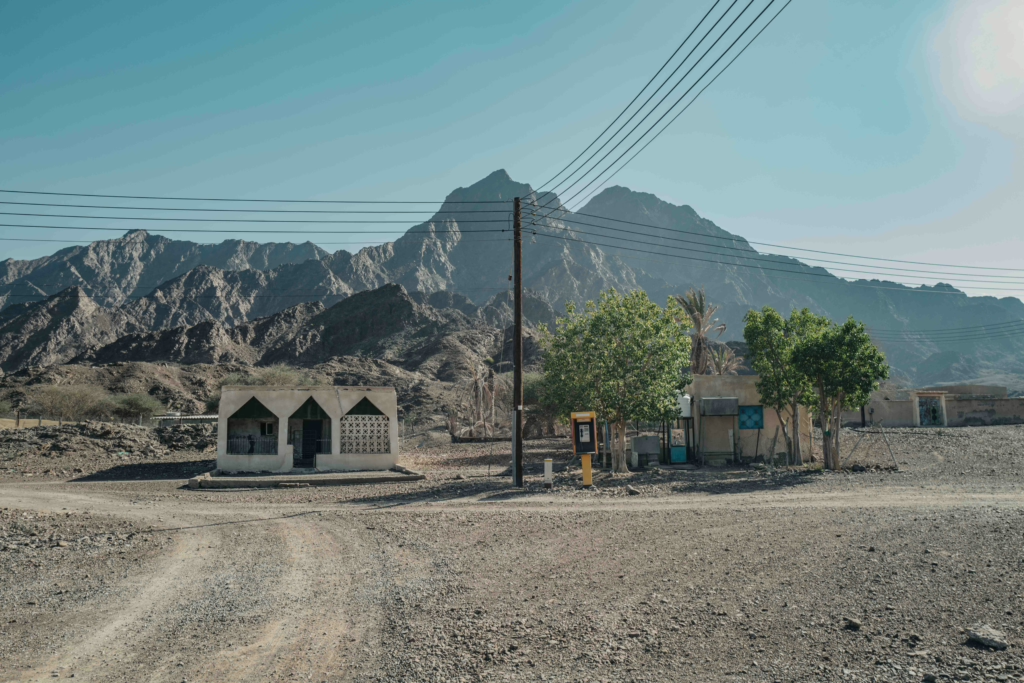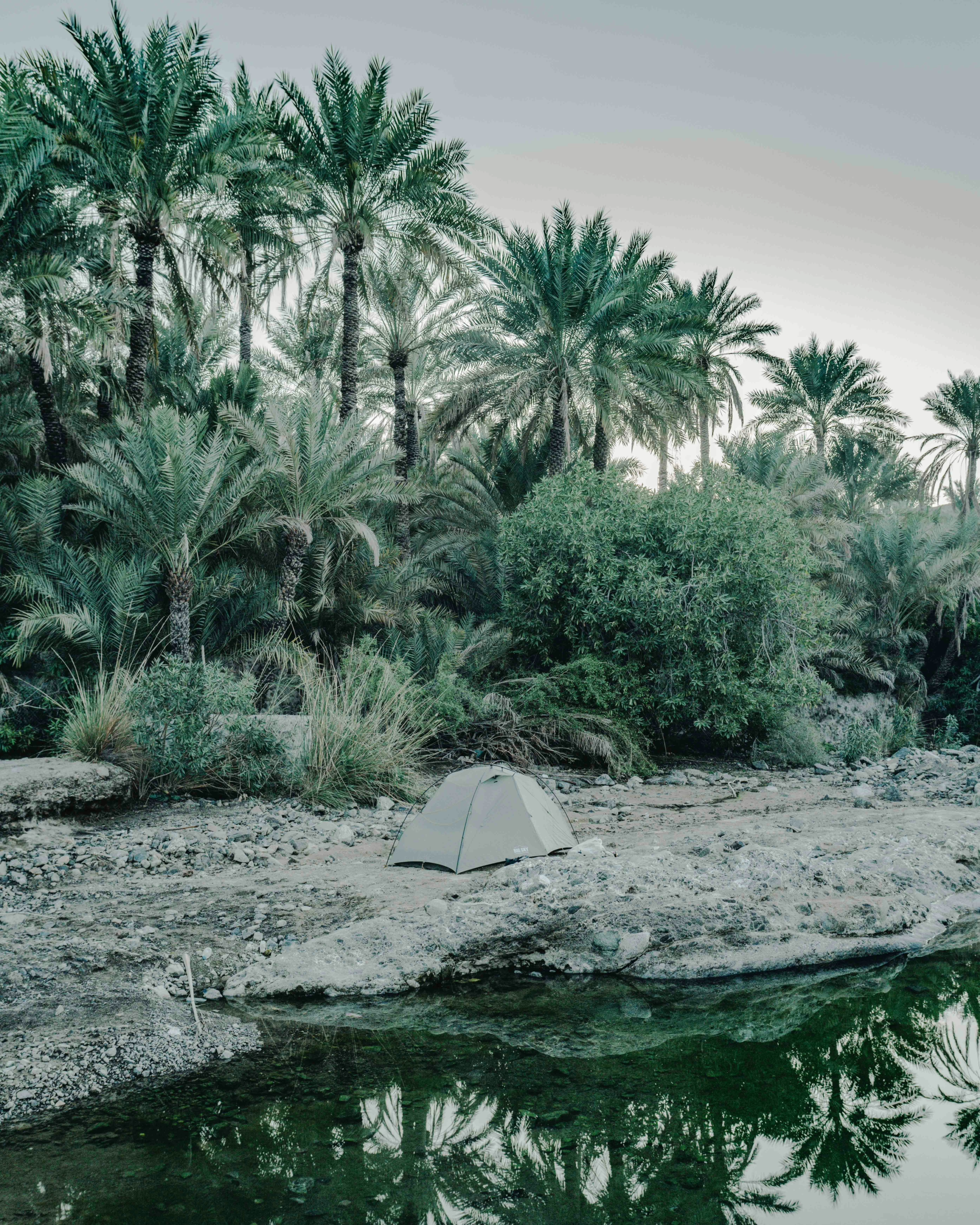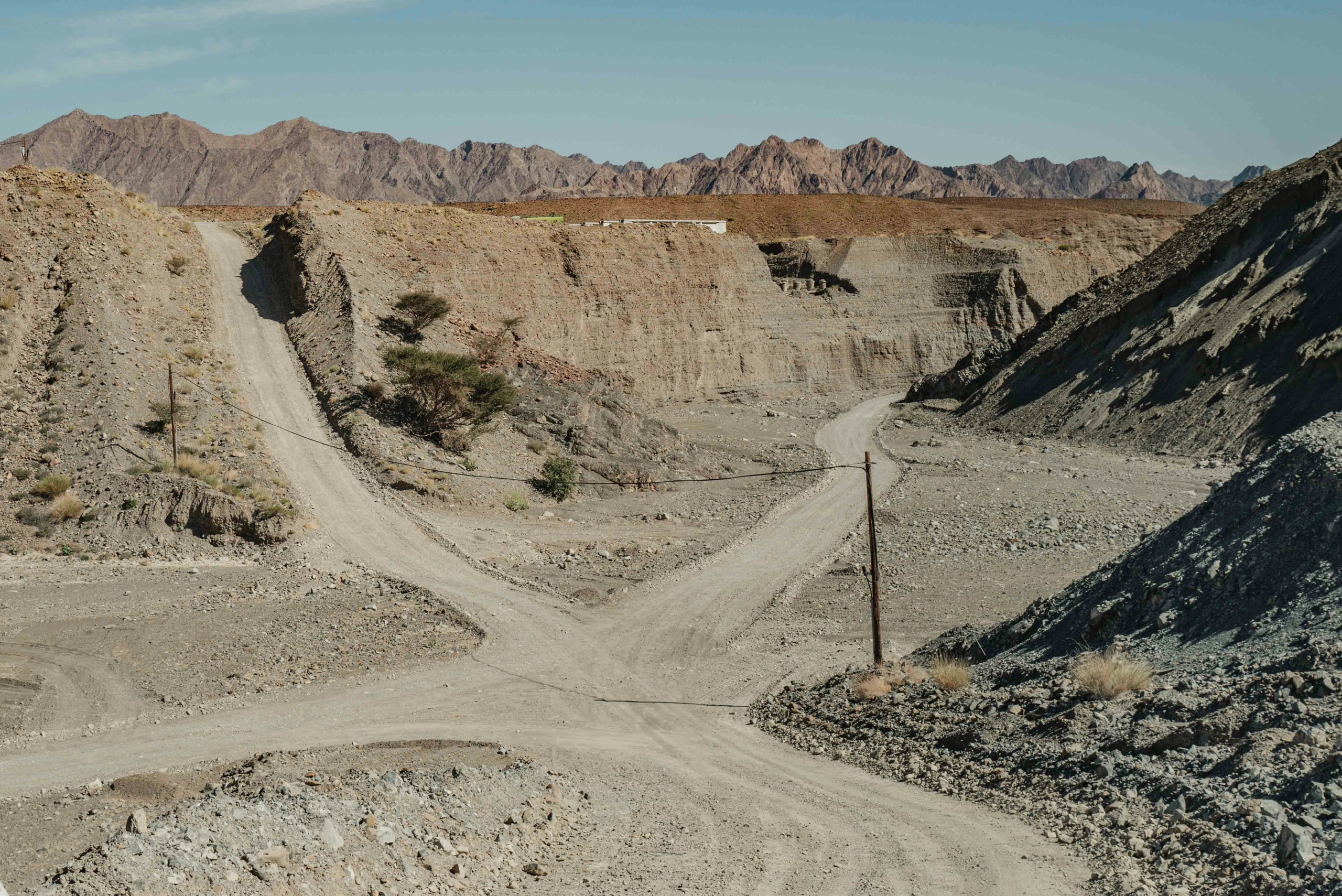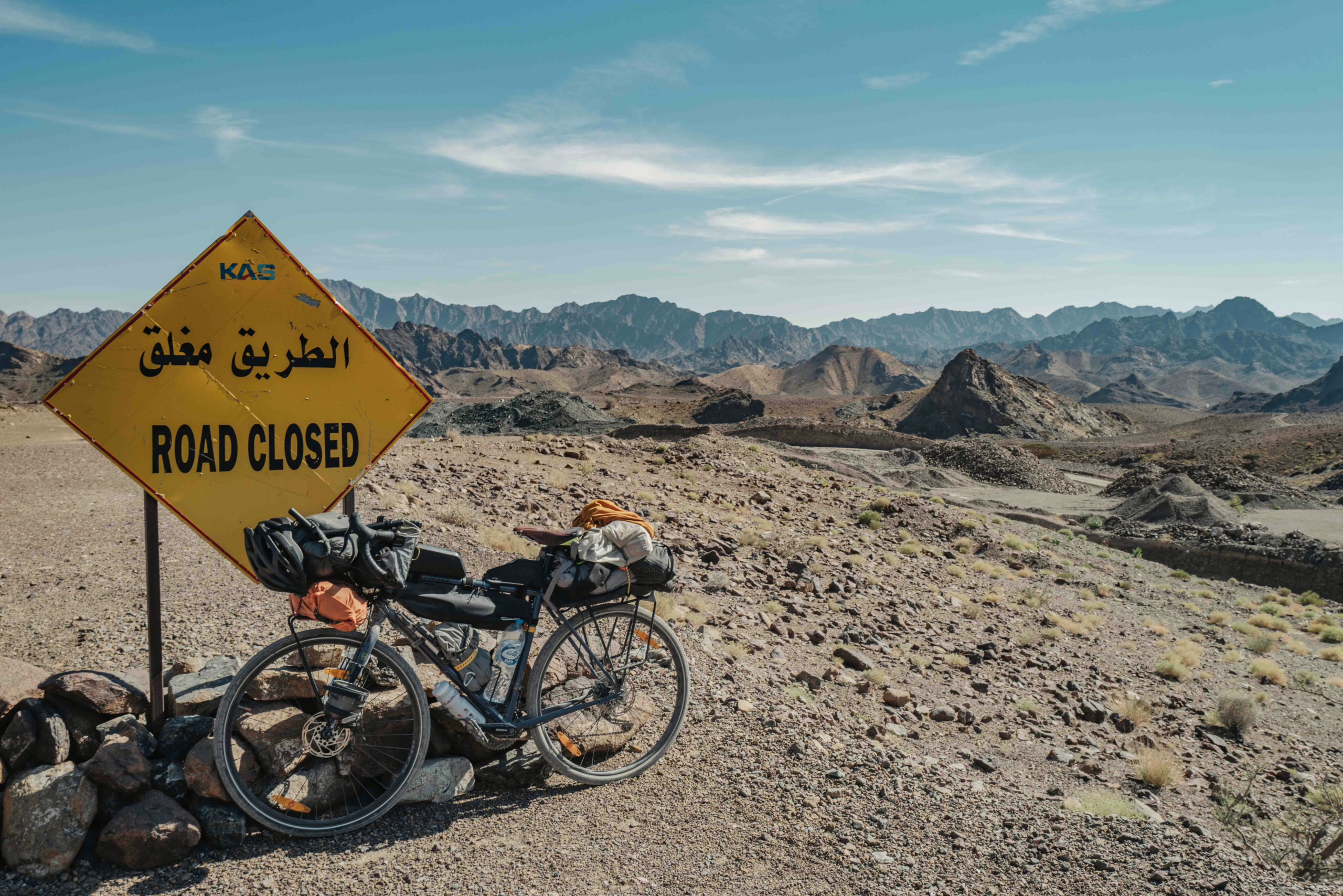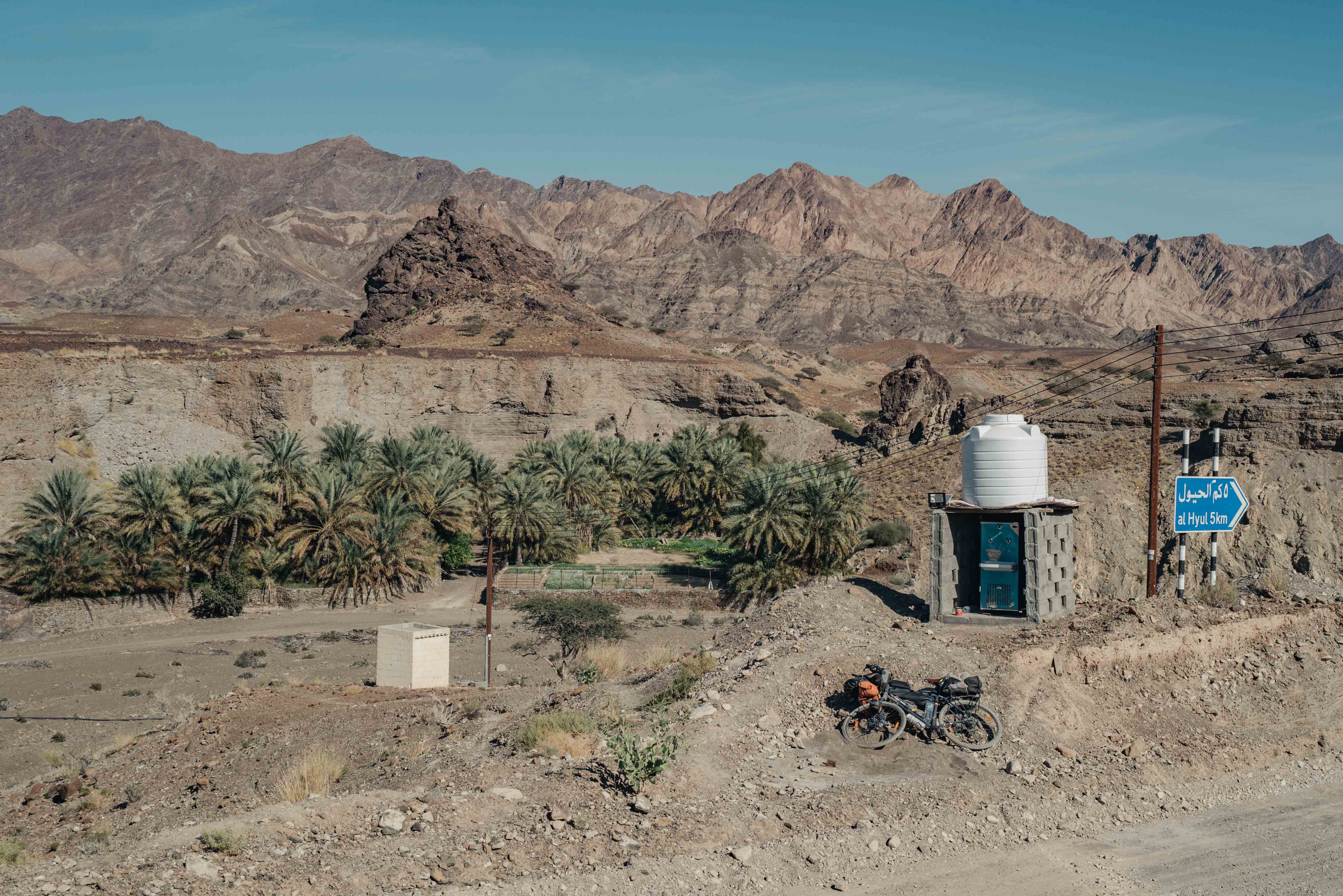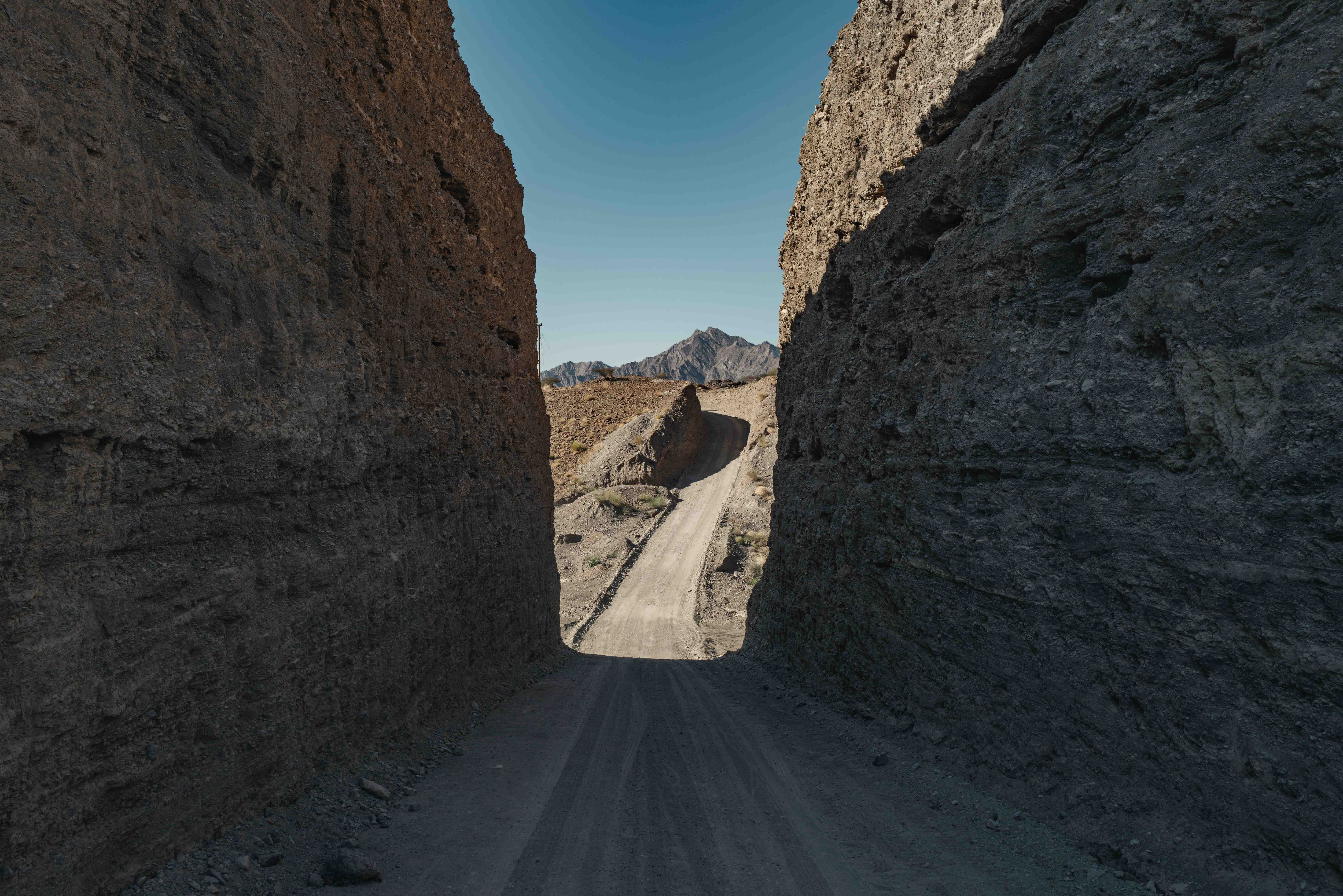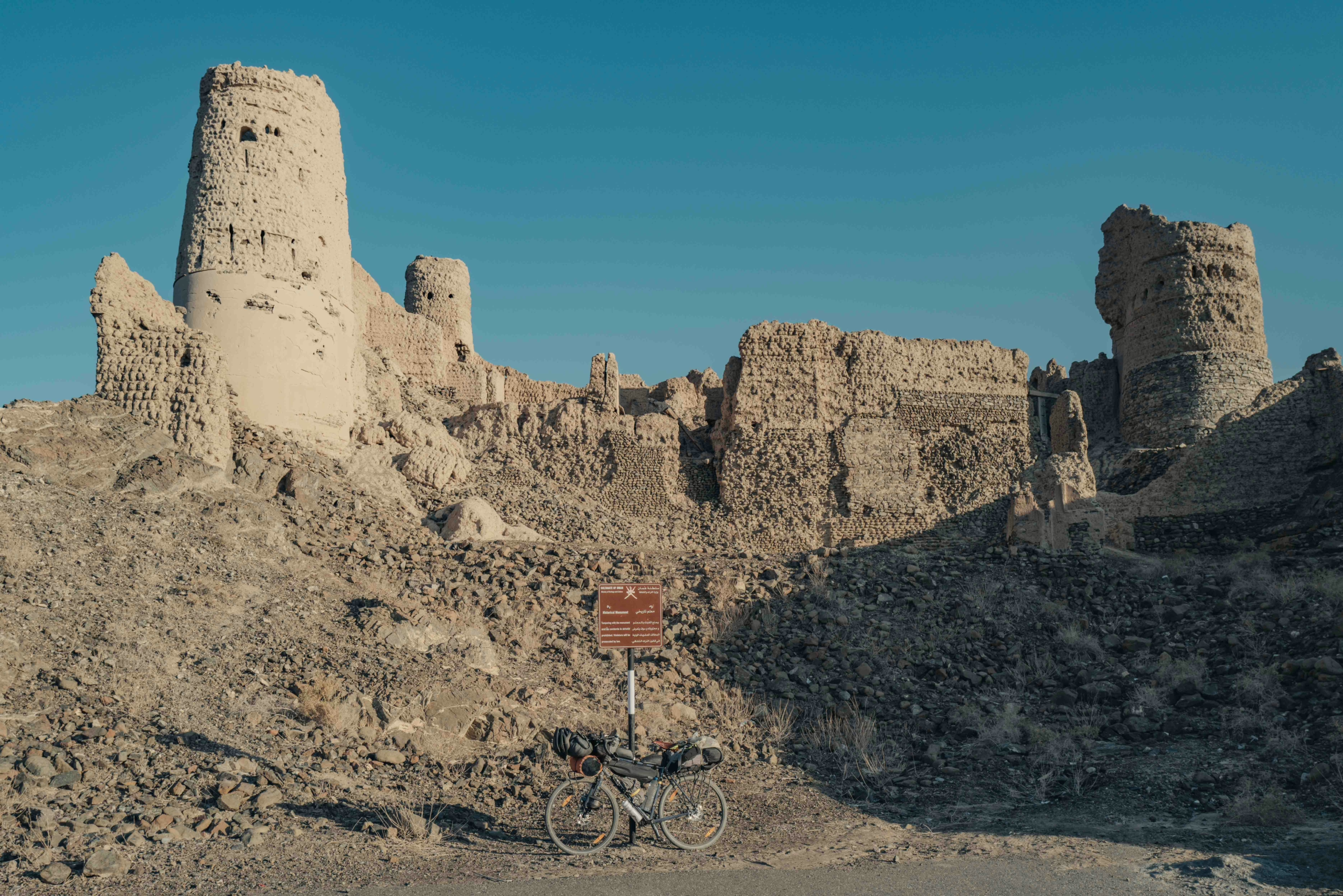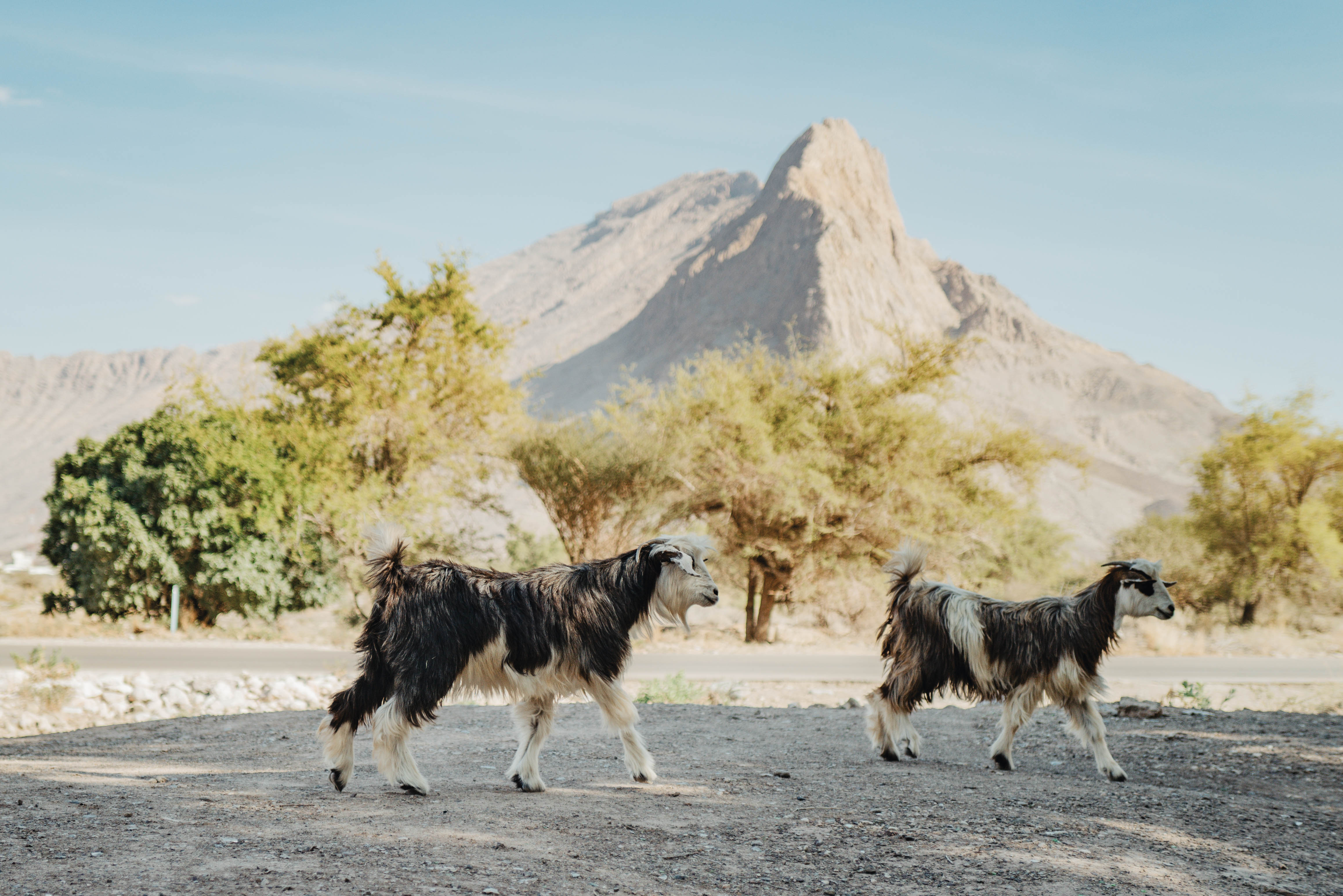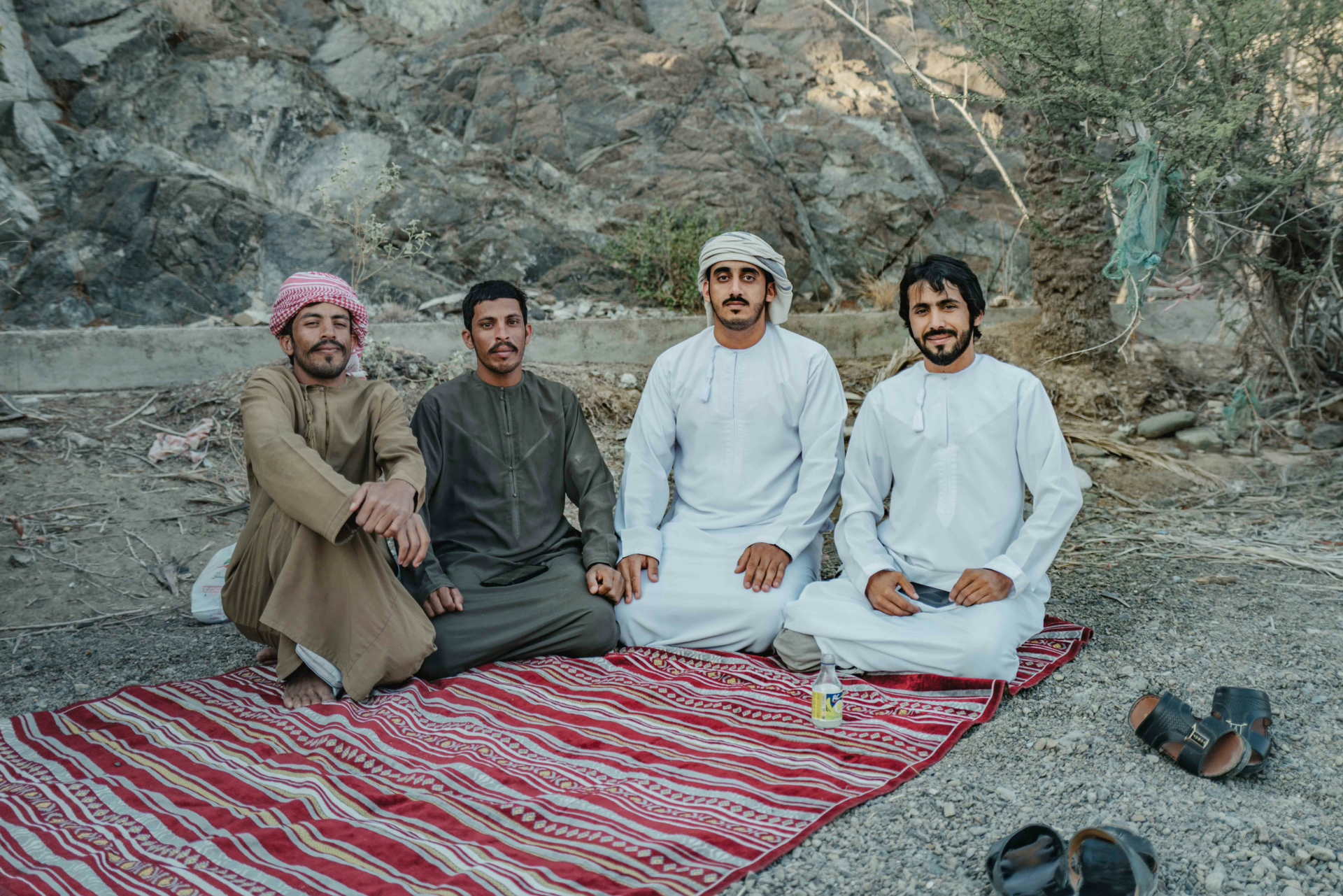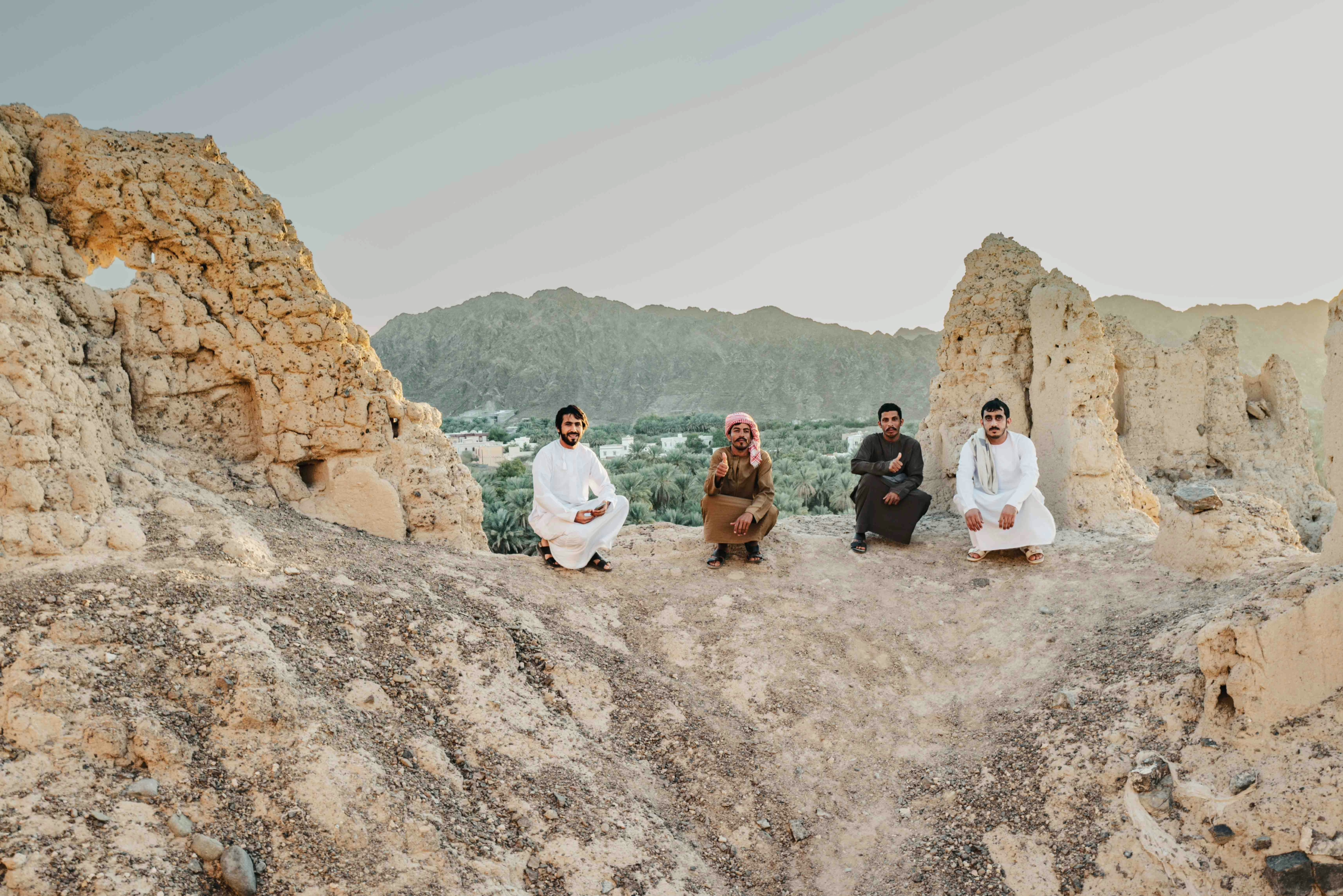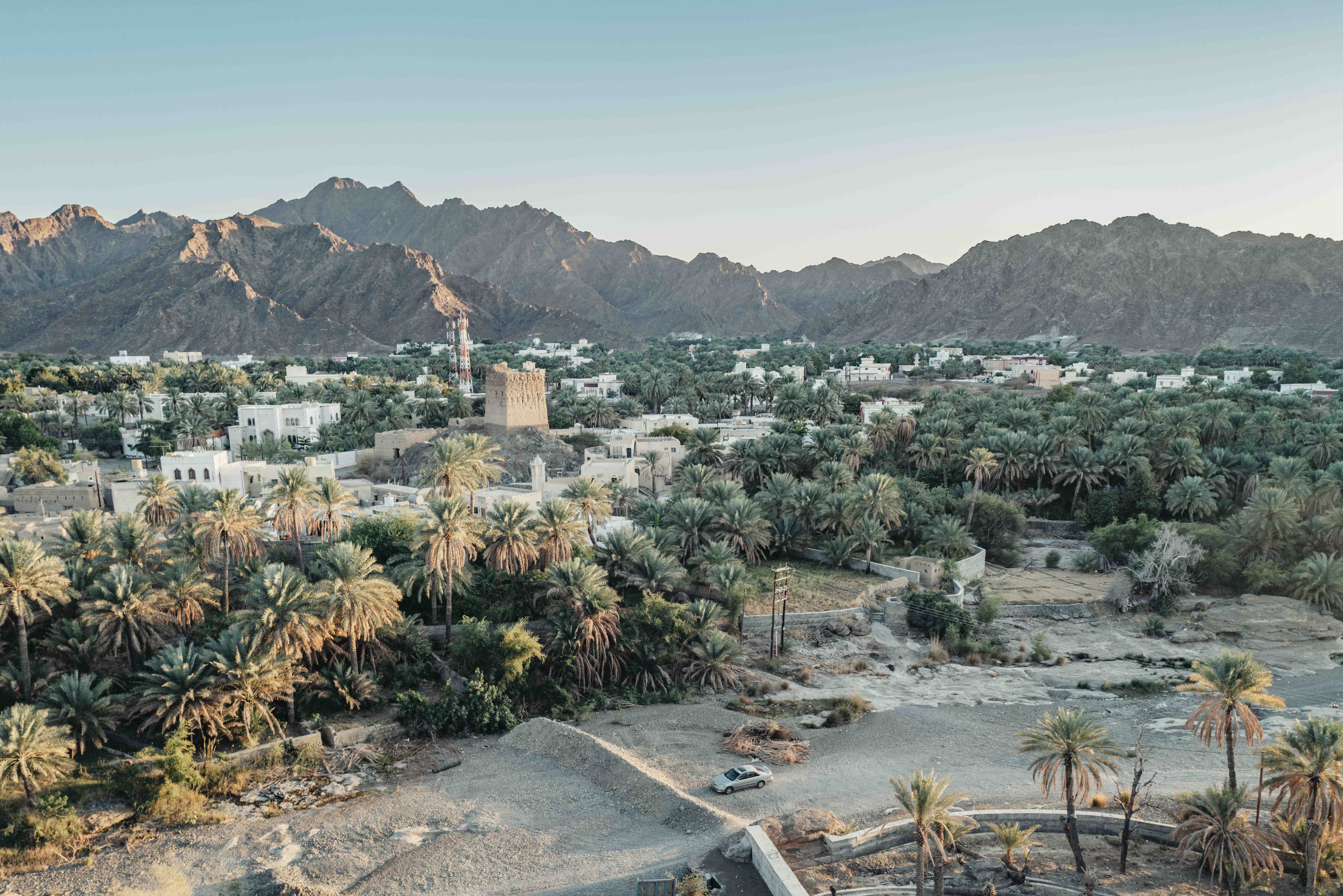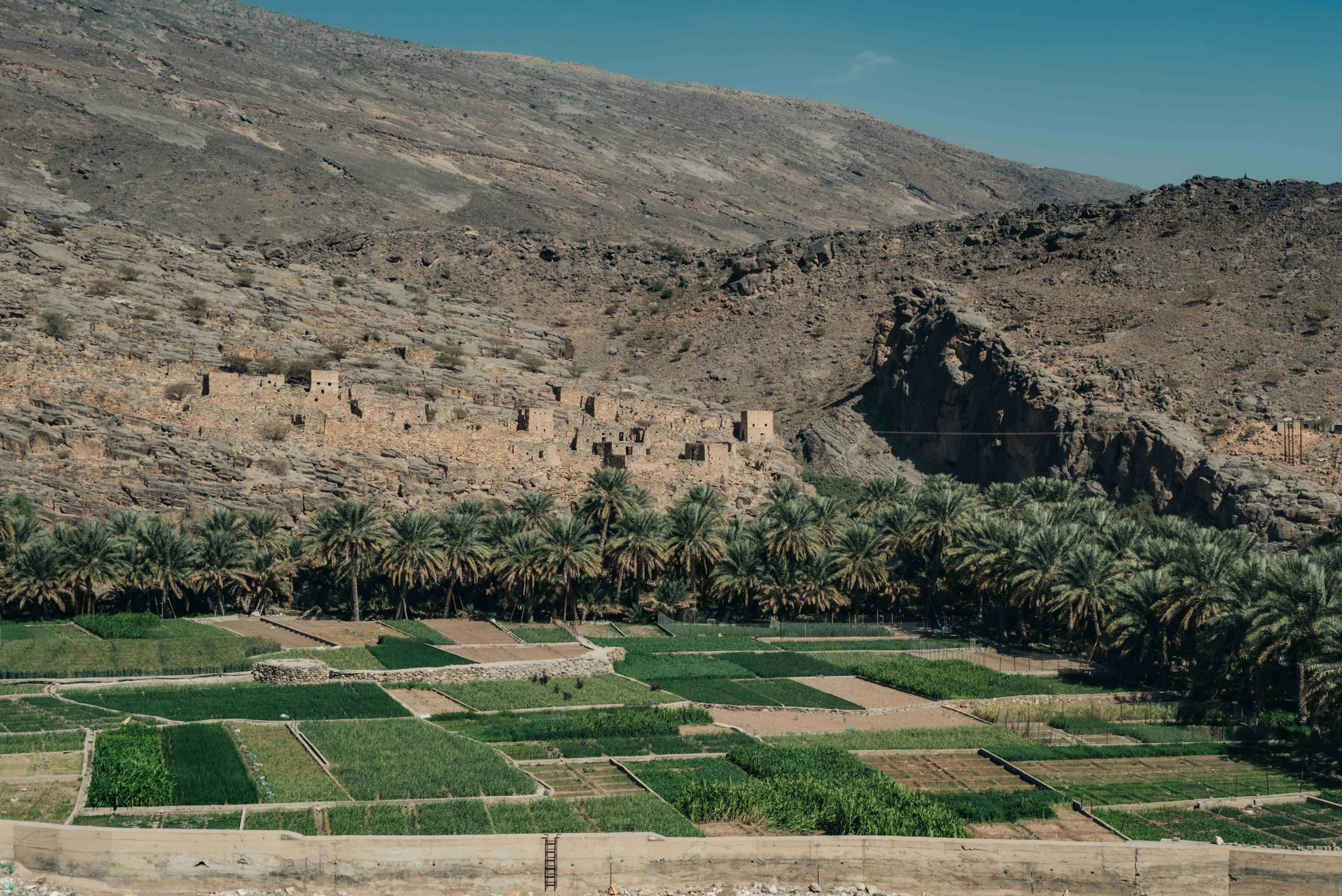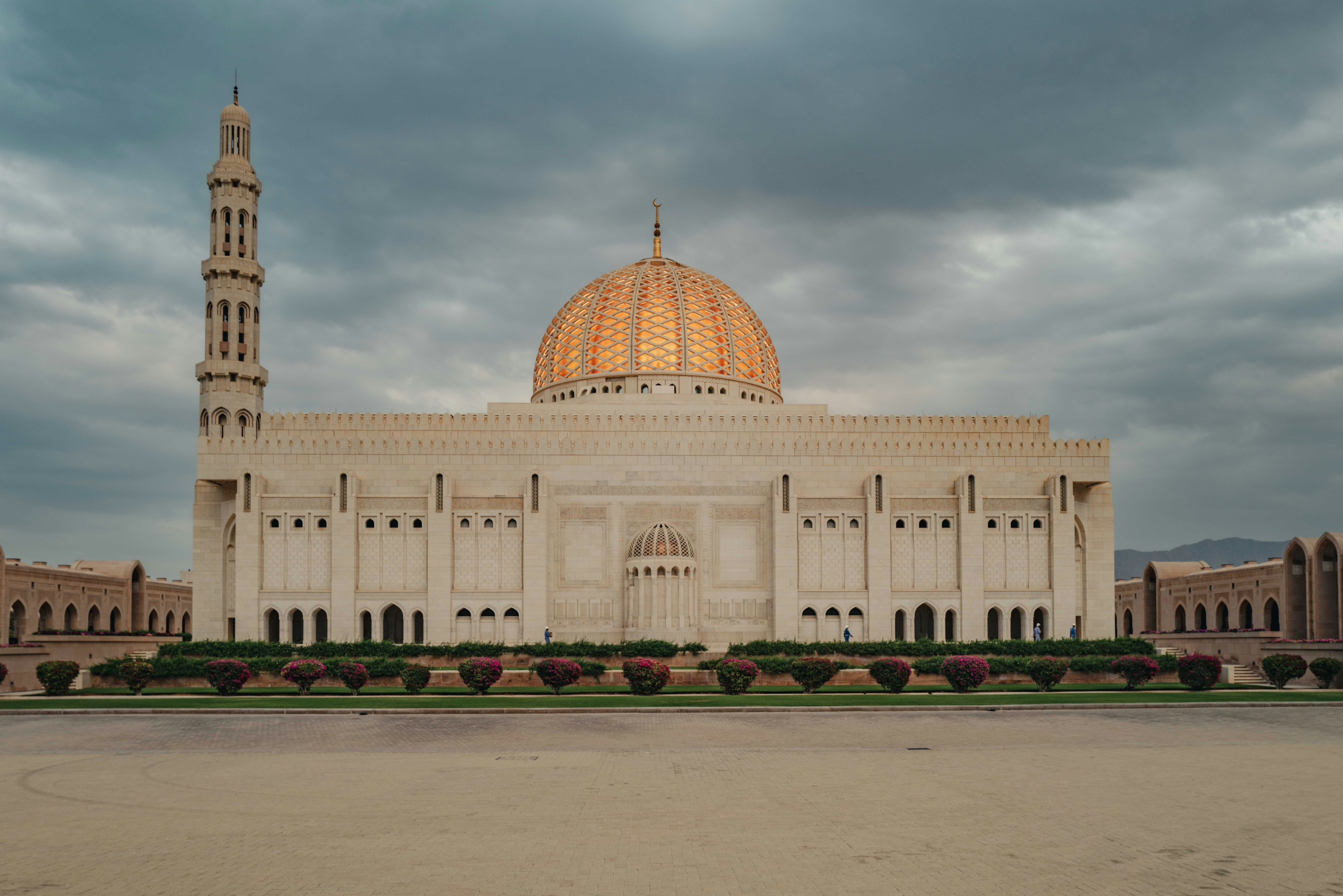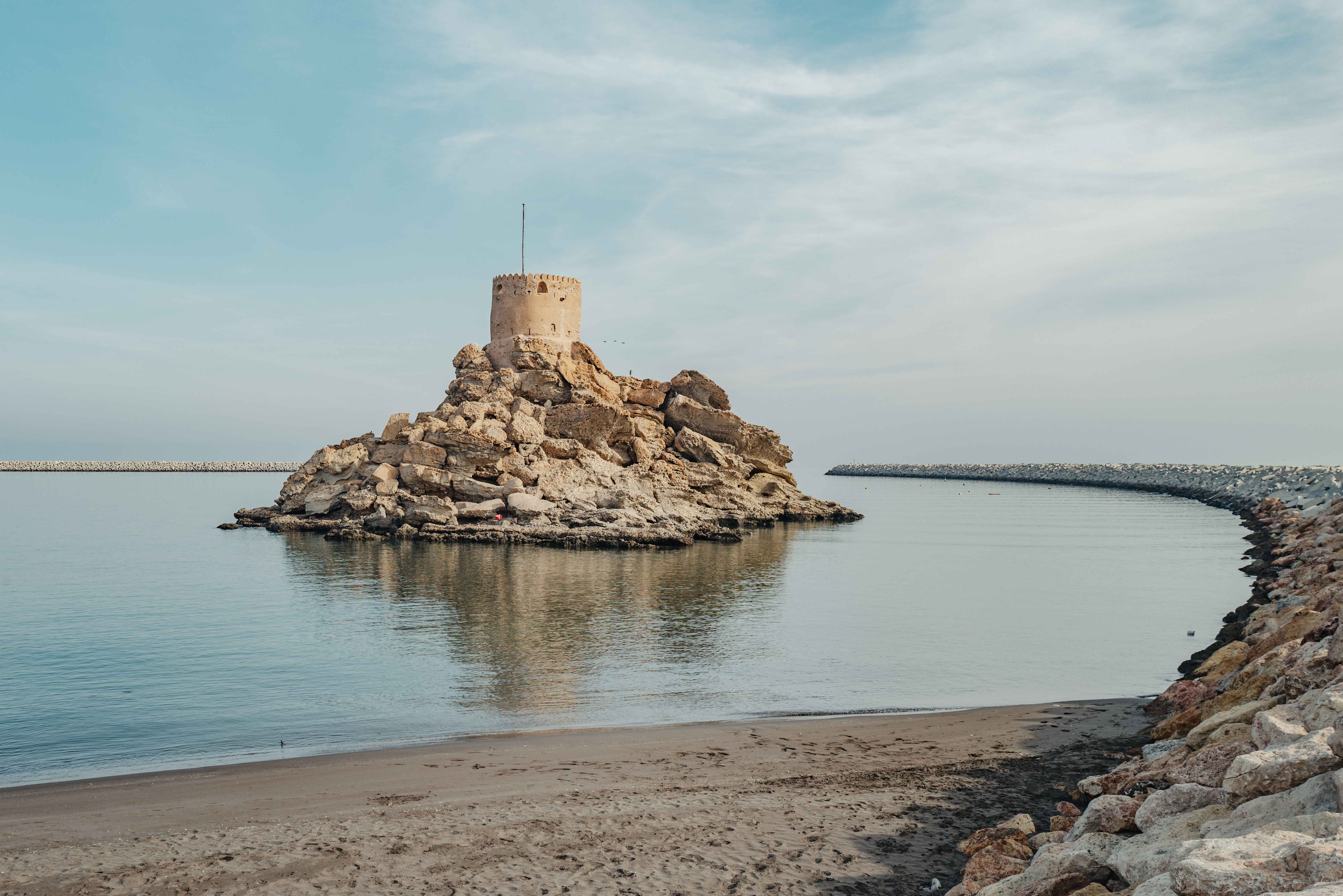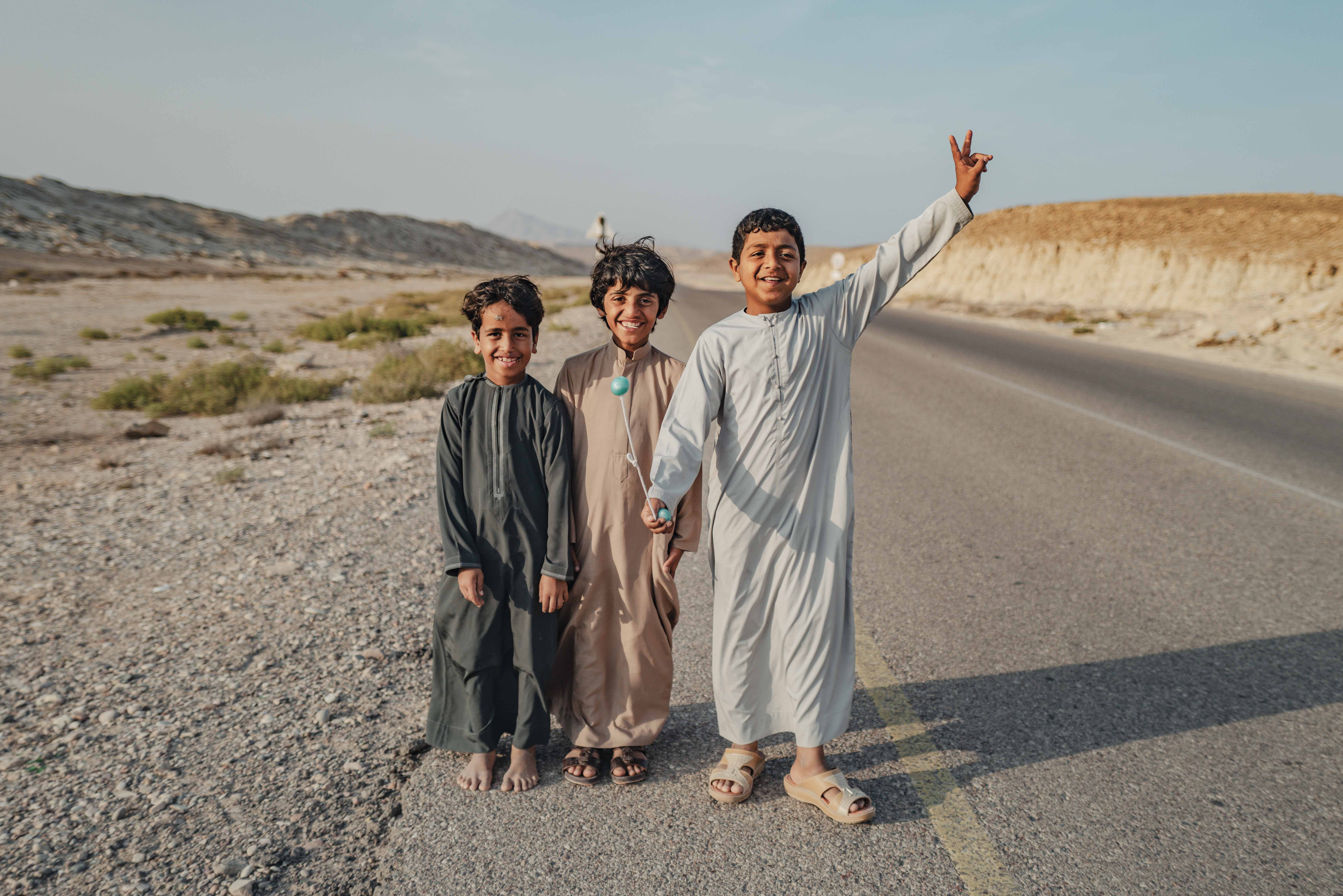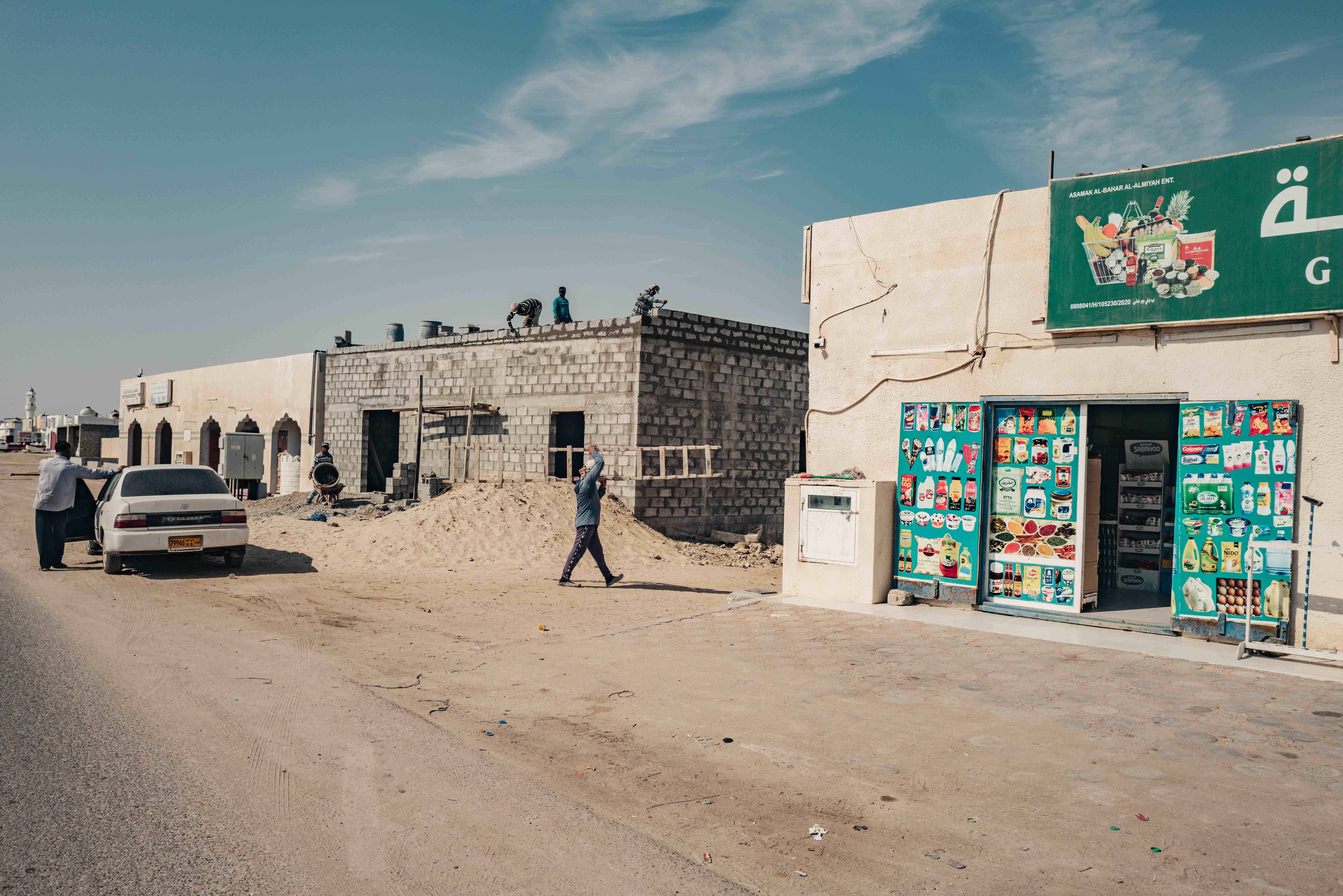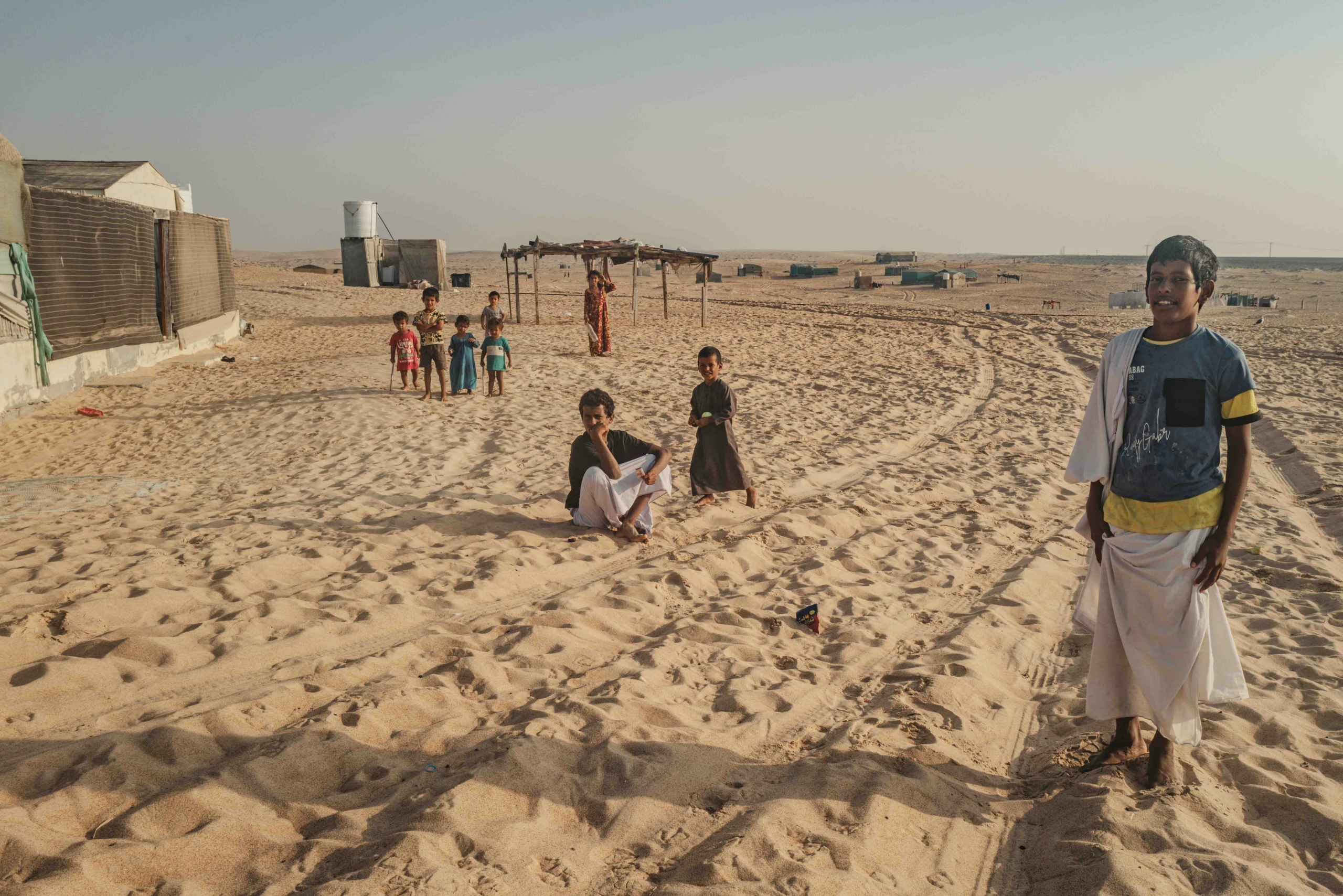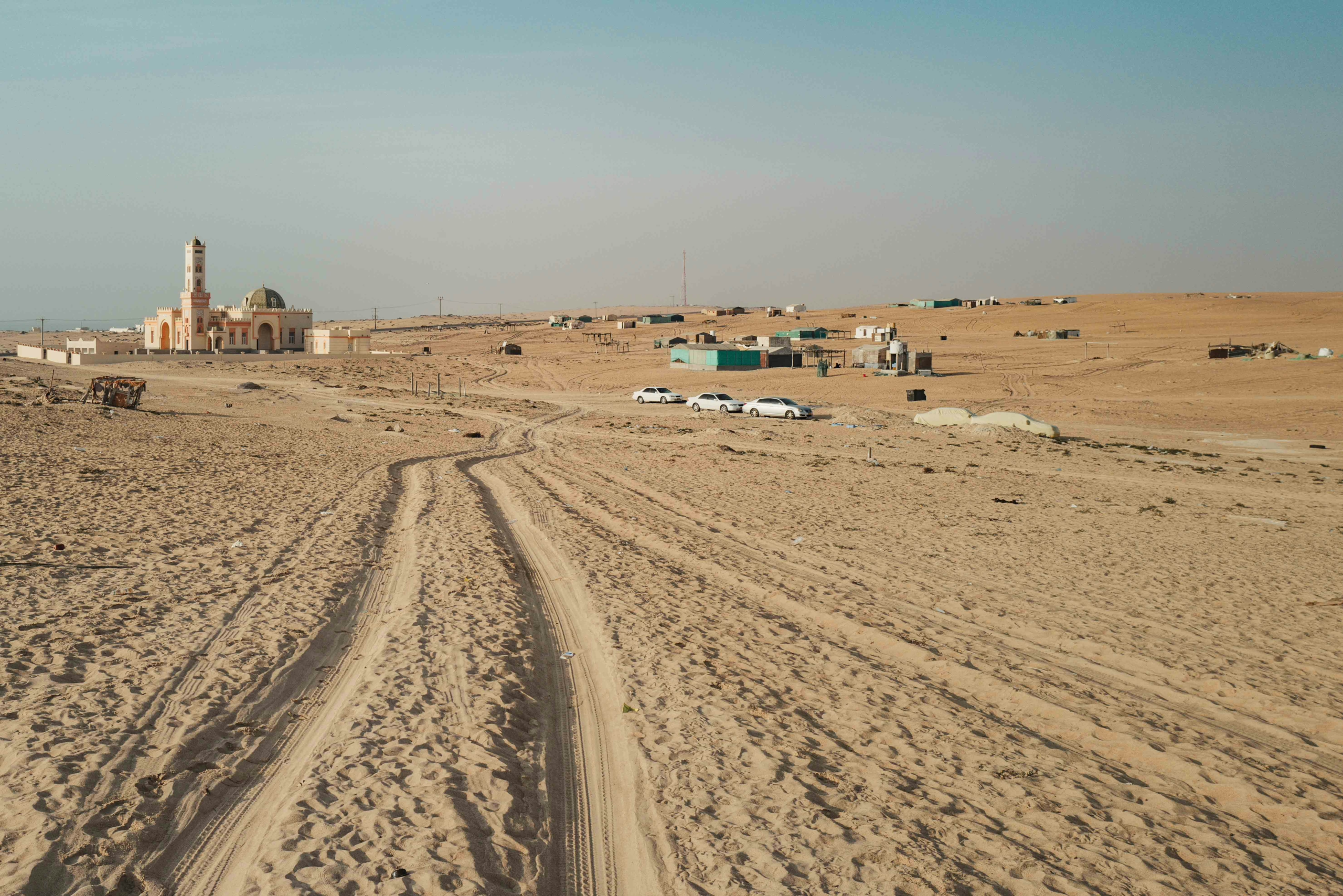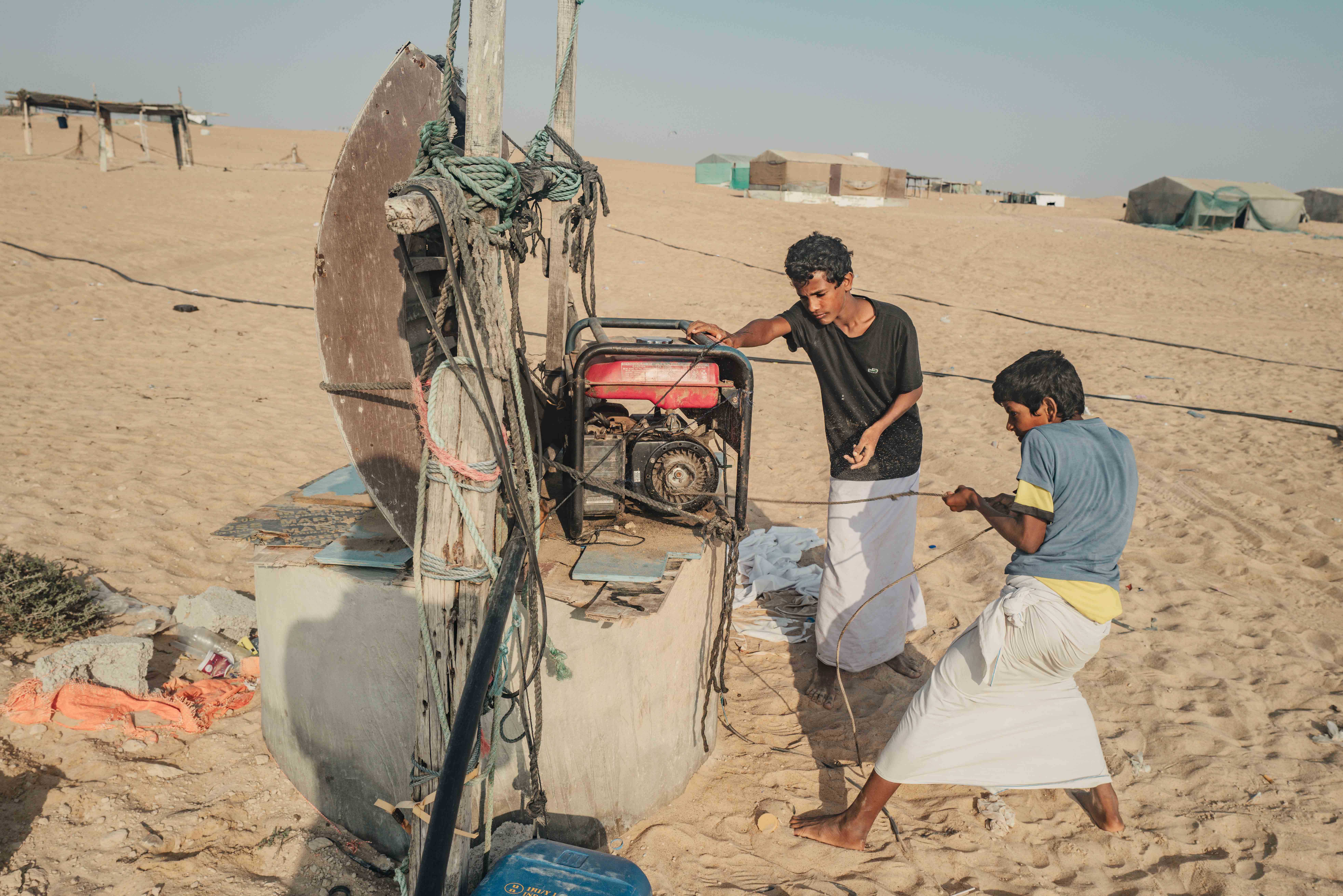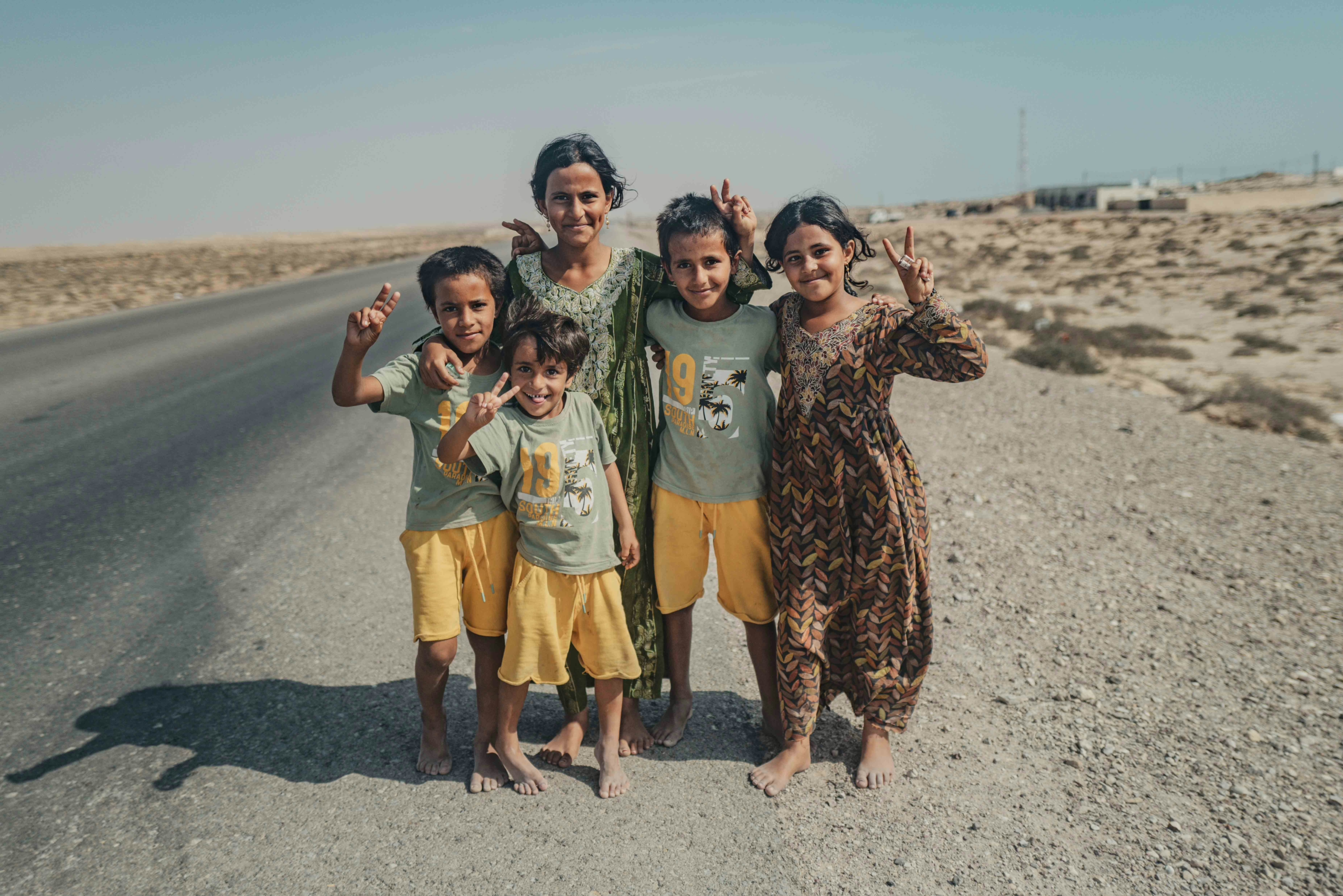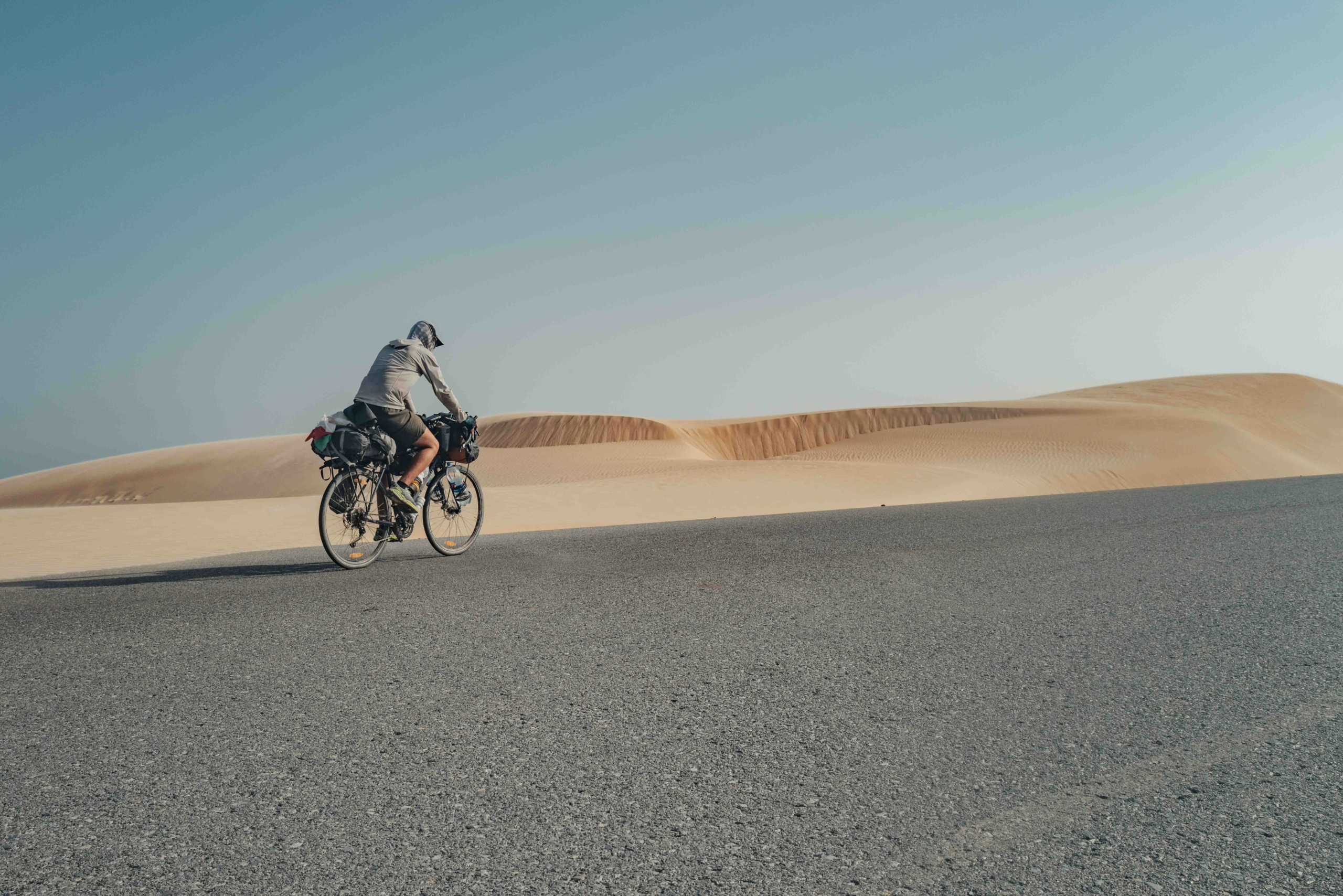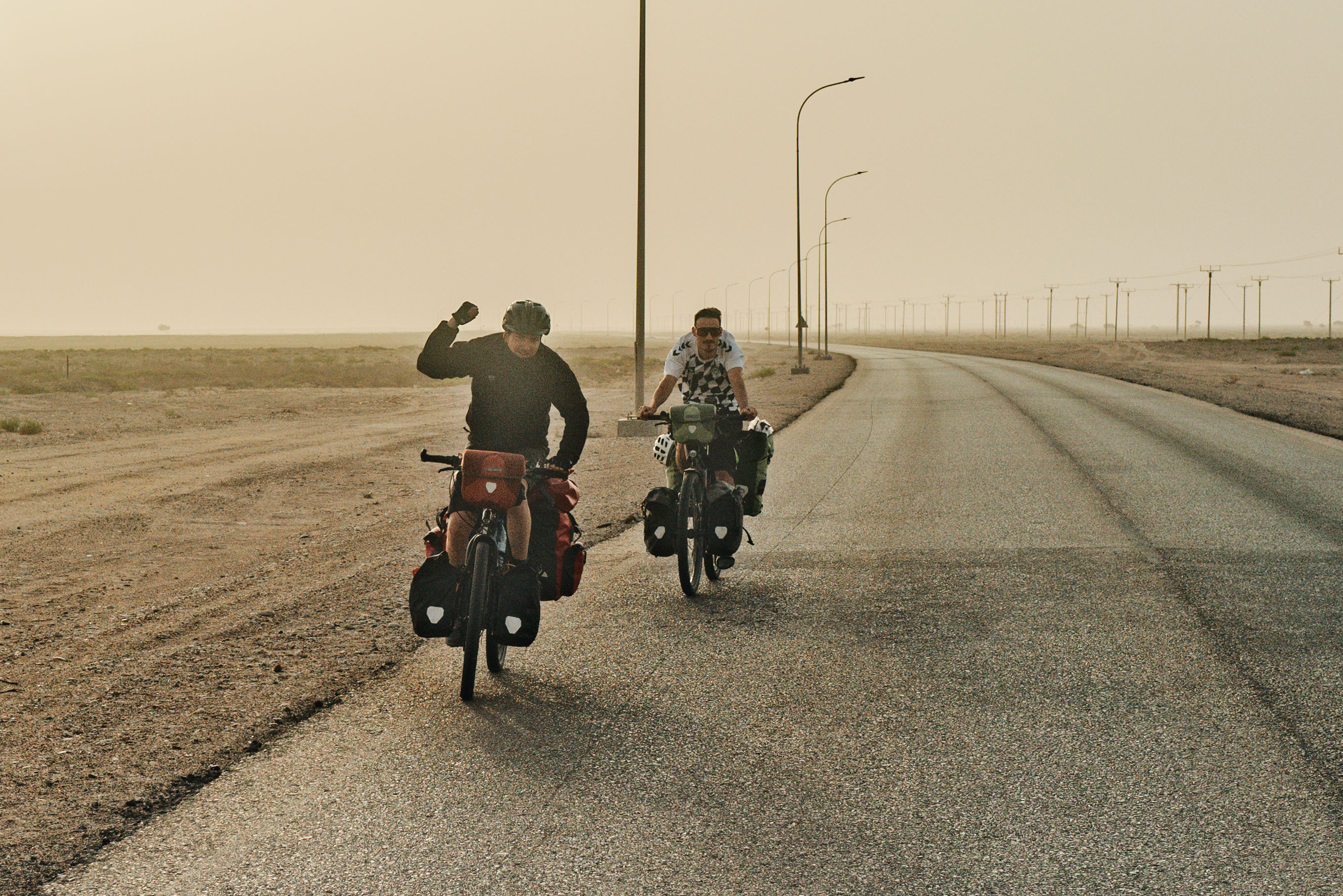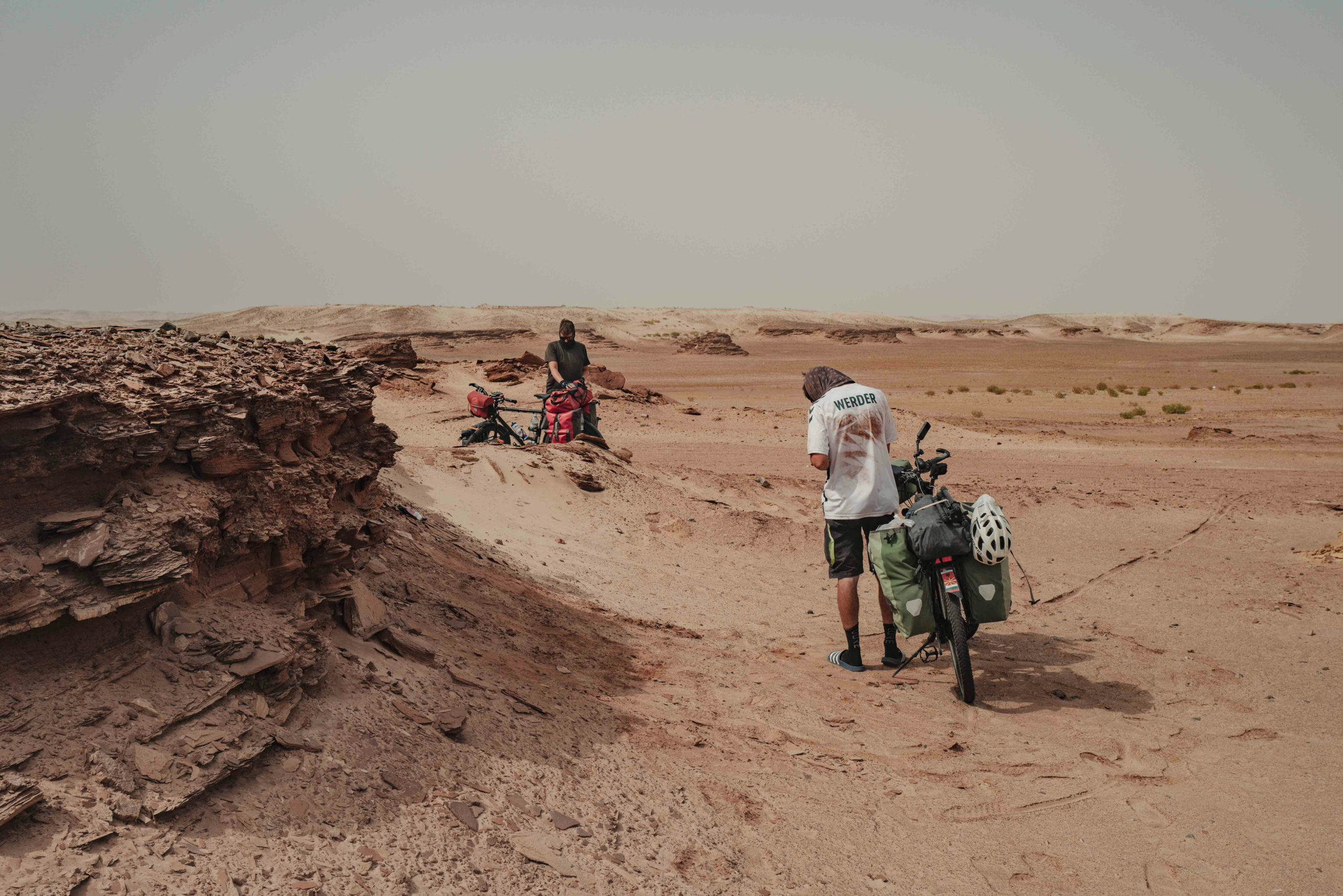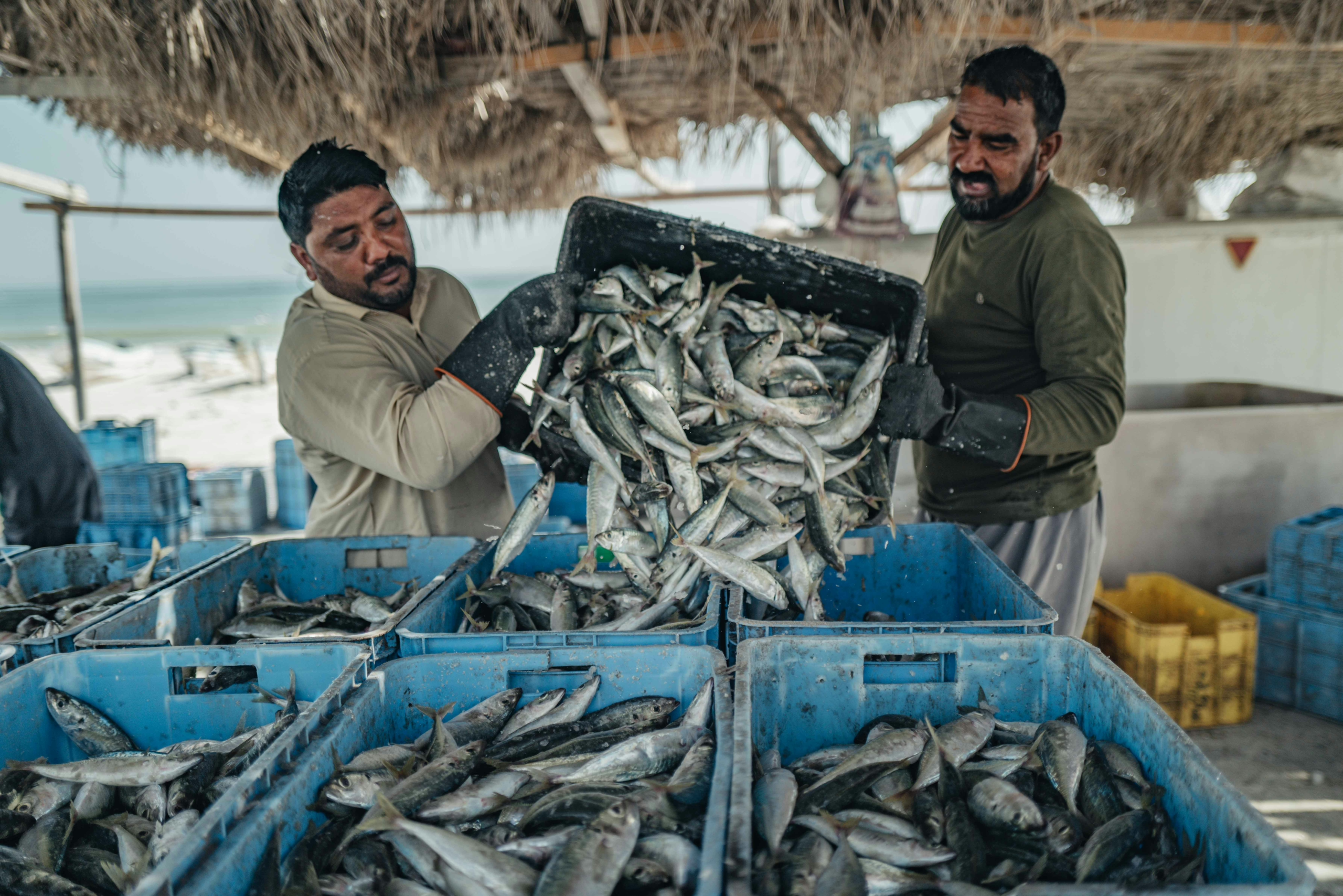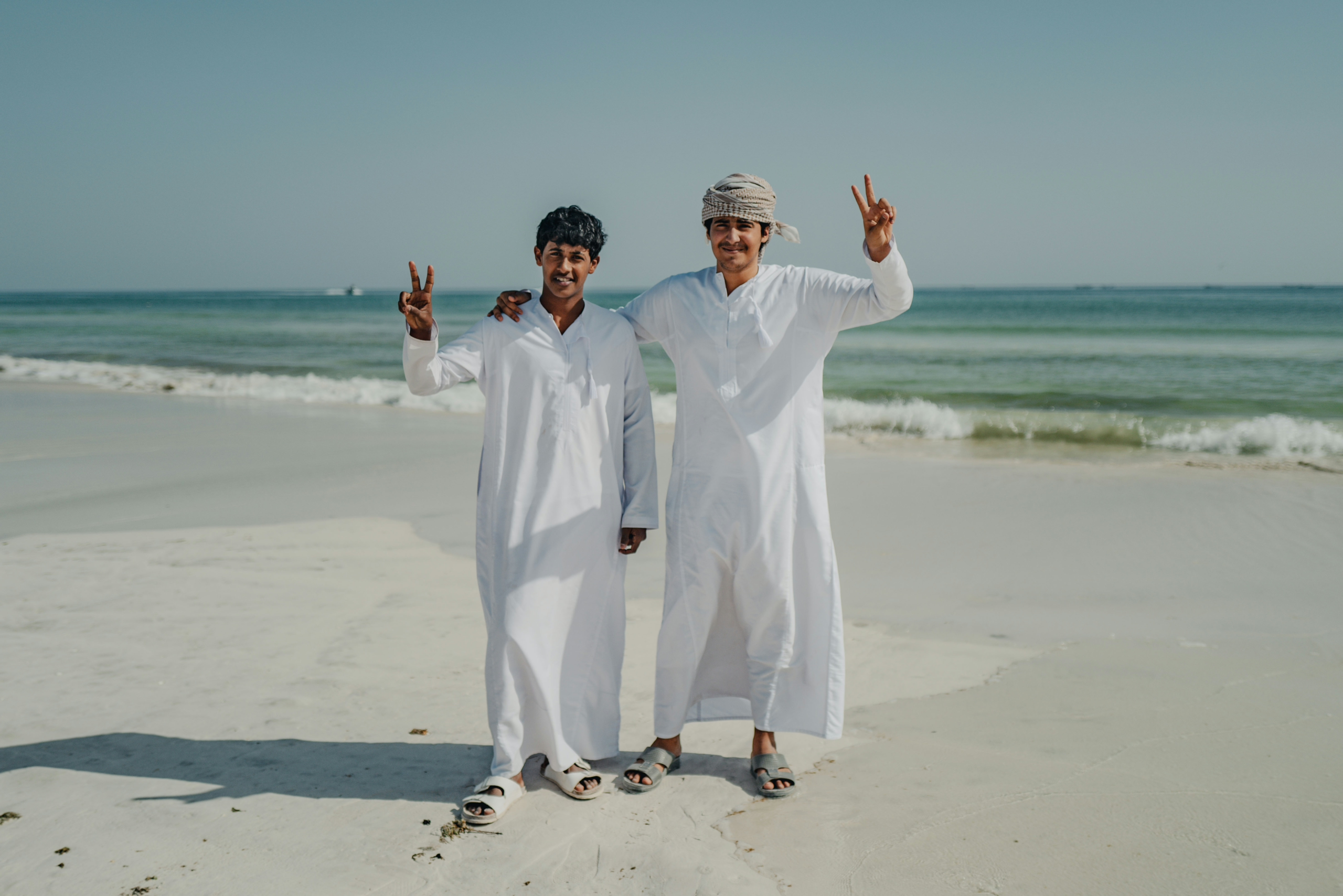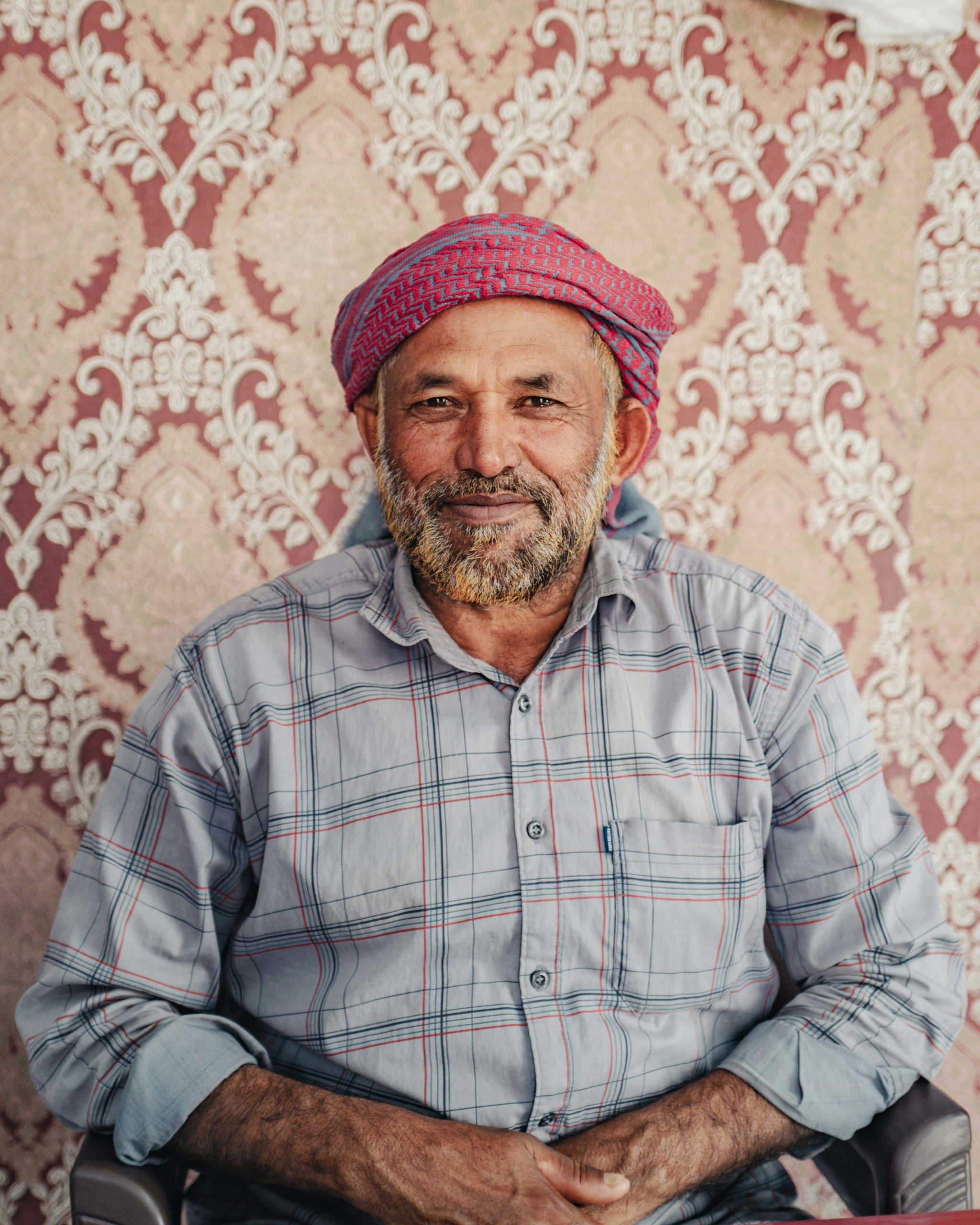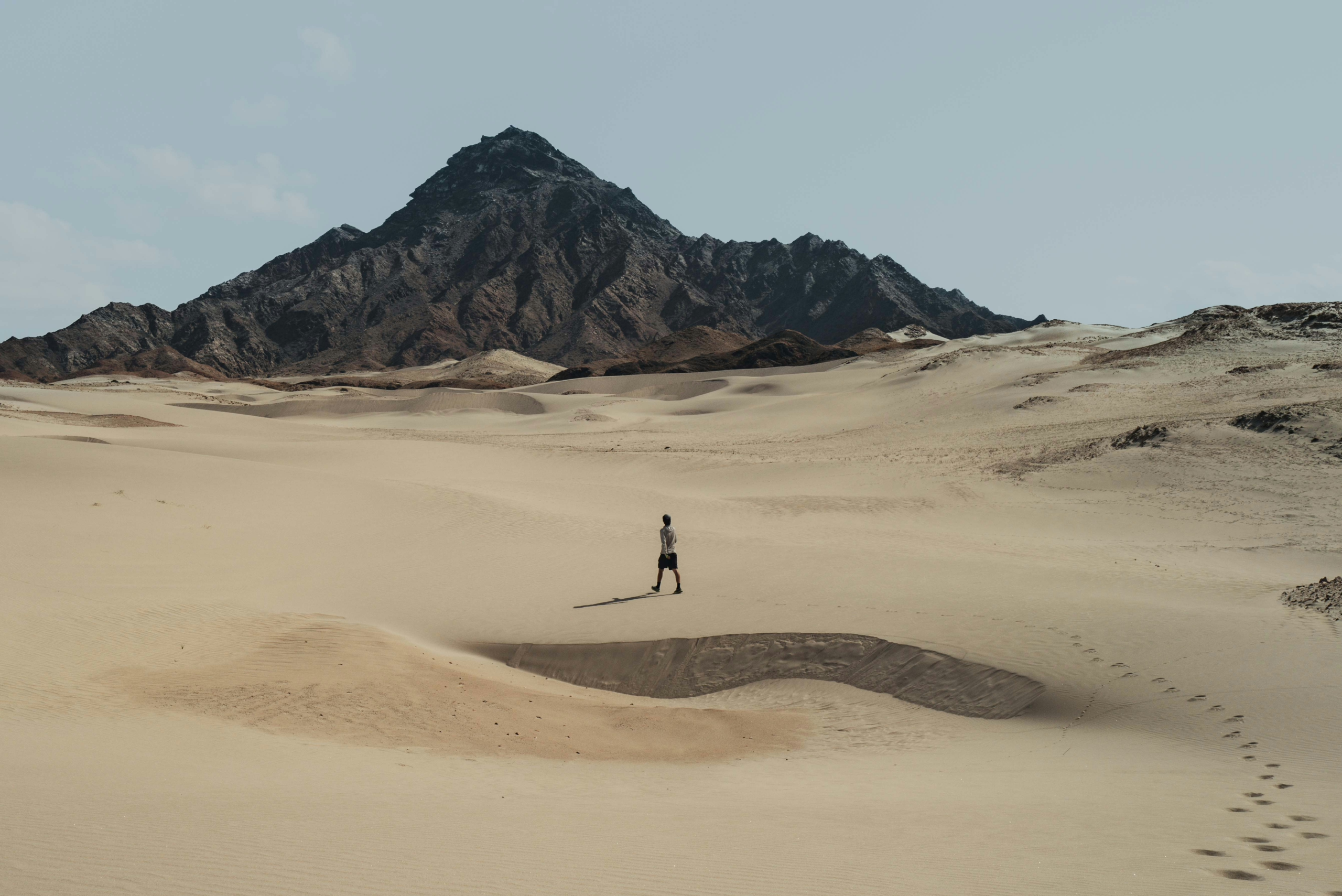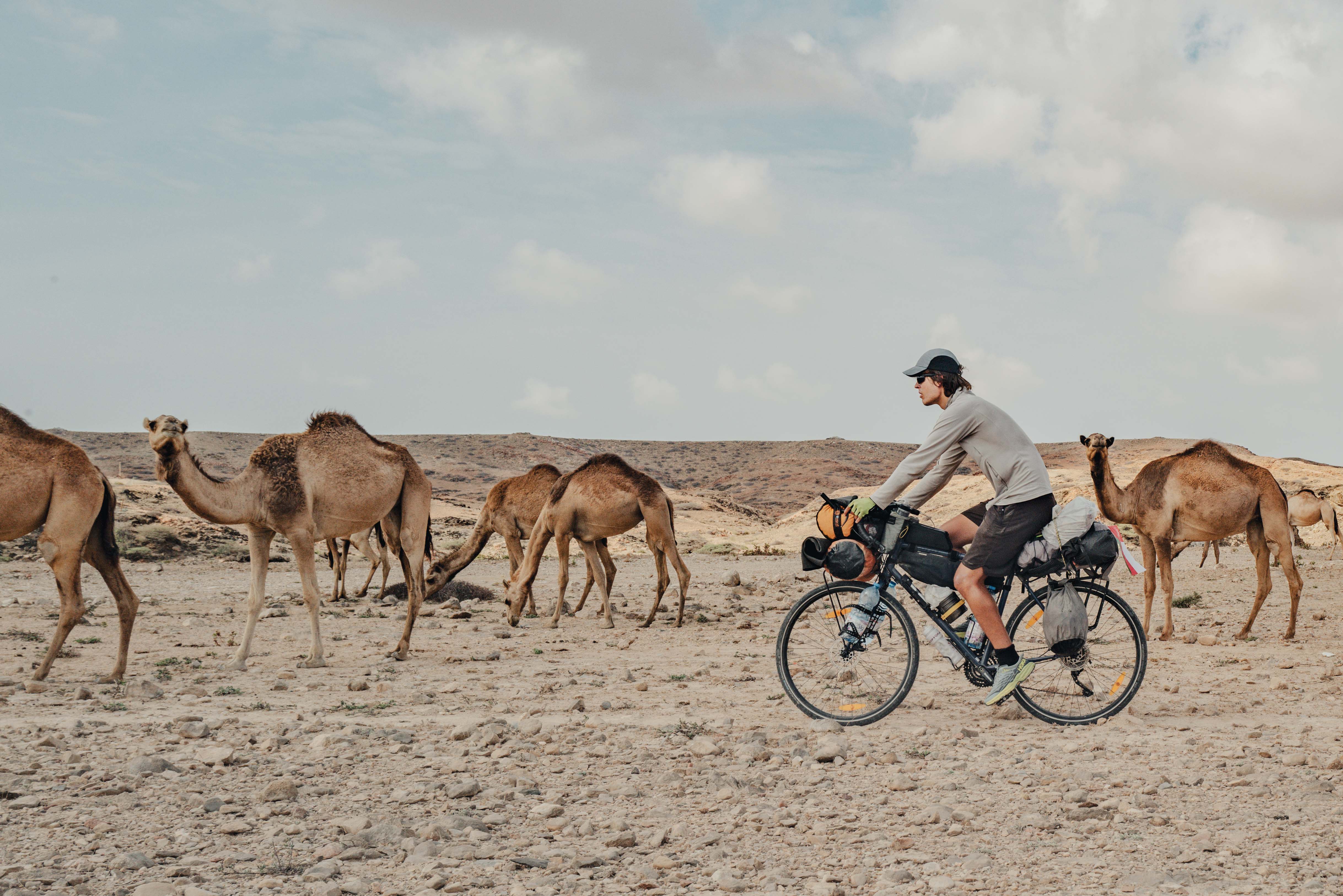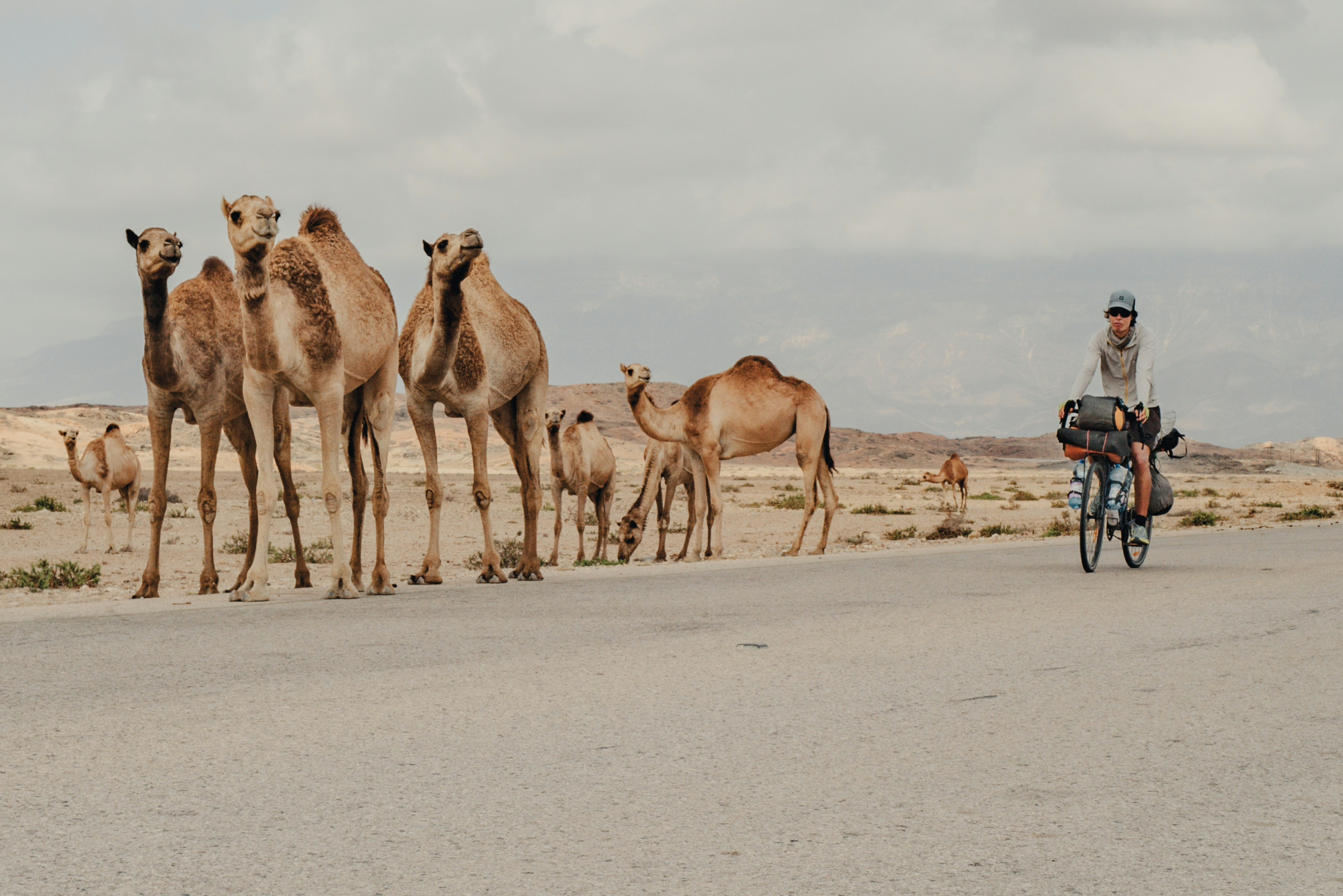
As soon as entered Oman from the UAE, I took a turn onto a small road heading into the Hajar Mountains. I was rewarded with a rugged but beautiful mountainous landscape, and butter-smooth yet empty roads.
This part of the country is sparsely populated, and you will come across many more goats than humans. Despite this there are frequent drinking water dispensers on the side of the road, often even cooled!
If you are looking for a challenge, search for unpaved roads or paths on your maps, as these usually lead through Wadis, which are dry river beds, resulting in short, but unimaginably steep ascents, often reaching inclines of 30%. This meant a lot of bike-pushing, which even in winter is exhausting as temperatures were still hovering around 30C.
Villages are sparse but very scenic, and also felt quite conservative, often the only people speaking English were migrants, mostly from Pakistan or Bangladesh. One afternoon a Pakistani family invited me for dinner and to spend at their place, and even offered to slaughter a goat for me, which I declined.
As I continued my way south and left the steep Wadi roads behind, I came across the first foreign tourists, most of them visiting the historic cities of Al Hamra and Nizwa, famous for its forts and date plantations. Here you will also find the Jebel Shams, with just over 3000m the highest mountain on the Arabian peninsula. I took a short break to rest and to do some hiking.
I then made my way towards the capital of Oman, Muscat, mainly to replace my broken camping stove. Apparently there are some nice beaches around Muscat, but I only spent a day here as I cycling in cities designed for cars will never be fun to cycle in (looking at you, Dubai!). However, Muscat marked the starting point for the long journey towards Salalah, Oman’s third biggest city, and the only major one in the south, close to Yemen. The distance via the highway is about 1000km, however it crosses Oman in the centre, which is mostly a massive wasteland, with few resupply points.
Instead I wanted to cycle ~1300km along the coast, where I would pass through some small cities and fishing villages, and the landscape would be a bit more interesting. Or so I thought.
Shortly after I reached the North-Eastern tip of Oman and started heading south, the landscape became extremely monotonous. Most of the time the road was actually a few kilometres inland, so I couldn’t quickly hop into the ocean to cool down or relax at the beach. I was surrounded by an empty, flat land with nothing more than a few bushes and the occasional camel for the next two weeks. That was longer than planned for this stretch, reason being that during the first week I was facing strong headwinds making the ride even more challenging, physically and mentally.
Fortunately two fellow German bicycle travellers were also in the region, so we met up and made the boring ride a bit more entertaining.
After a few days together we parted ways and I slowly started to appreciate the solitude, reason being the lack of cars, silence, clear night skies and the fact that the headwind was gone.
I started making process and soon reached the mountains of the Dhofar governorate, of which Salalah is the capital. A spectacular scenery can be found in this region, with pristine beaches on the left, steep mountains on the right, and scenic Wadis in between. In summer it is supposedly even more picturesque, when the entire landscape is green and full of life thanks to tropical storms (‘Khareef’) bringing in lots of rain. Temperatures will also drop below 30C, making it arguably the only place in Oman where one could cycle during summer, when temperatures in rest of the country reach 40+ degrees Celsius.
And just like that I had made it – cycling almost the entire length of Oman. Continuing further south into Yemen wouldn’t have been wise, so I flew to Kyrgyzstan to continue my journey around the globe.
Looking back, Oman is definitely among my favourite countries I’ve been to. You will be surprised by its diverse landscape and warmly welcomed by the Omanis and migrant workers alike. Cities are modern, there are many cheap restaurants and free drinking water can be found at mosques. It’s also one of the safest countries in the world, making it an option for solo female travellers. On that note, I was surprised how few local women I’ve come across during my two months here. Oman is quite a bit more conservative than the Emirates for example in that regard. On the flip side, this means that you will find beautiful traditional architecture instead of skyscrapers.
